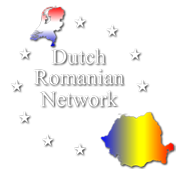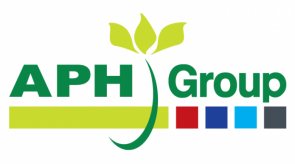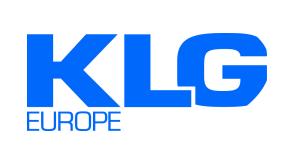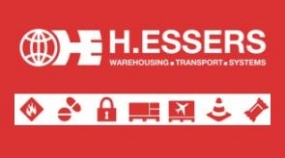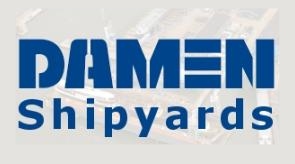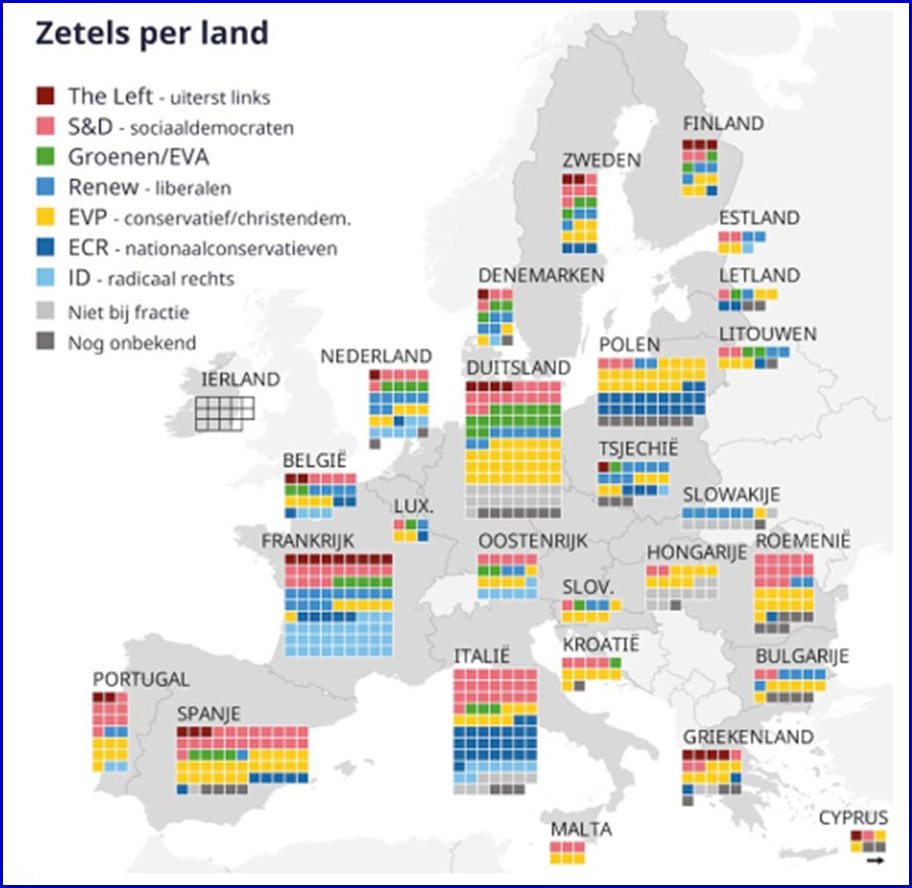Newsletter June 2024

The strength of a Dutch Romanian network
 Networking is making and maintaining the right contacts. The idea behind networking is to build and maintain functional contacts. With the underlying idea of sharing knowledge, information and contacts with each other. Or asking someone for a more direct favor.
Networking is making and maintaining the right contacts. The idea behind networking is to build and maintain functional contacts. With the underlying idea of sharing knowledge, information and contacts with each other. Or asking someone for a more direct favor.
Networking relies on mutual respect and trust. Networking does have to come from both sides. This does not mean that you always have to mean something to the other person immediately. It’s about being intentional about what you yourself have to offer the other person.
Of course, everyone already has their own network. If you are going to start a branch in another country or are already established there, in our opinion, it is part of your business activities.
A network requires focus
Numerous considerations can play a role in choosing a particular country. Given that the Netherlands is the largest investor in Romania, it is not surprising that Romania is a contender in this sense. And since we as Dutch Romanian Network (DRN) focus only on Romania and have done so since 2007, we can say without exaggeration that we are in a unique position.

In our membership and also in the board you will find pioneers who have already settled in Romania in the nineties and are familiar with the opportunities the country offers, but also where the pitfalls are.
Building, maintaining and expanding your network
When building your network, you can speed up the process by choosing the DRN’s network, for example, which, by the way, is always expanding. Because we are a non-sectoral network, most entrepreneurs will find businesses related to your own activities. This includes the cross-sectoral aspect. Whereby new insights how certain ideas, practices and concepts from other sectors can be of value to another sector.
Maintaining your network means showing a continued interest in others. That includes following up on tips, information and advice you receive. Show that you appreciate them, even if you can’t do anything with them yourself. Maybe you can pass it on to someone else. Not every contact may be immediately valuable but perhaps in the longer term. By the way, a not insignificant part of the maintenance of your network is done by the DRN. Of course, we will also let you know when there is no immediate reason to do so. And anyway, you will receive our monthly newsletter that will soon be available to members only (barring government agencies, educational institutions and the like).
Last but not least, your company name and profile on our website also means generating additional exposure, because a time-honored networking wisdom says “Because it’s not about who you know, but who knows you.
Like you, our board members also have a business, so for further information please send a message to info@dutchromaniannetwork.nl. It’s THE way to get a quick response!
Transport and Logistics Sector
Maersk improved its annual profit estimates due to strong demand for container shipping worldwide
Leading Danish company AP Moller Maersk A/S has revised upward its annual profit estimates, reflecting increased demand in the global container delivery segment, against the backdrop of the Red Sea crisis, Reuters reported.
Maersk expects earnings before tax, interest, depreciation and amortization (EBITDA) of $7-9 billion this year, compared with the previous estimate of $4-6 billion and the 2023 level of $9.6 billion. Analysts expect EBITDA of $6.6 billion this year.
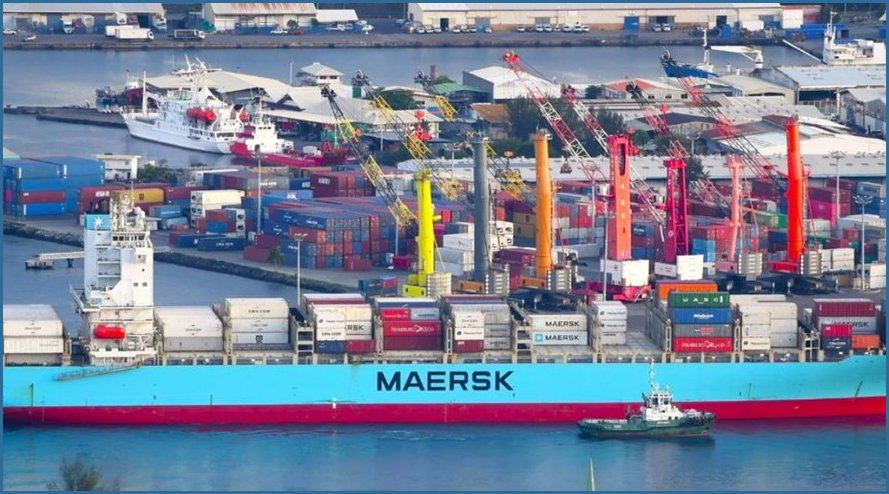
Maersk, one of the world’s largest shipping companies, with a market share of about 17%, carries goods for giants such as Walmart, Nike and Unilever.
The company, seen as a barometer of global trade, warned that there were new signs of port congestion, especially in Asia and the Middle East, and of further increases in container shipping rates.
Advances in container shipping prices and new issues at ports will contribute to stronger financial performance in the second half of 2024, Maersk announced.
The company expects free cash flow of at least $1 billion by 2024.
Neele-Vat partner of the Erasmus University Challenge
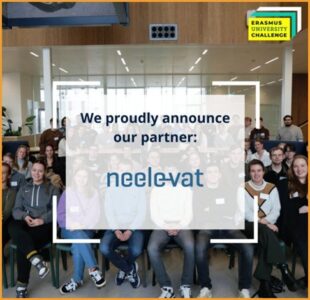 Neele-Vat has officially become a business partner of the Erasmus University Challenge. This initiative, organized by Erasmus University Rotterdam, provides a platform where students, researchers and young professionals can present and develop their innovative ideas. As a proud partner, we support the challenge and help shape its future.
Neele-Vat has officially become a business partner of the Erasmus University Challenge. This initiative, organized by Erasmus University Rotterdam, provides a platform where students, researchers and young professionals can present and develop their innovative ideas. As a proud partner, we support the challenge and help shape its future.
About the Erasmus University Challenge
The Erasmus University Challenge is an important competition that bridges academic knowledge with the practical needs of business. Participants work on solutions to real world problems and have the opportunity to present their ideas to a panel of experts. This event not only encourages creativity and innovation among students, but also strengthens collaboration between academia and industry.
Our role as a business partner
As a business partner of the Erasmus University Challenge, Neele-Vat plays an important role in supporting and guiding the participants.

We share our knowledge and experience in logistics and supply chain management with participants and provide them with valuable insights and feedback. This helps them not only refine their ideas, but also develop practical solutions that are directly applicable in industry.
Neele-Vat Logistics has been based in Romania since 2011
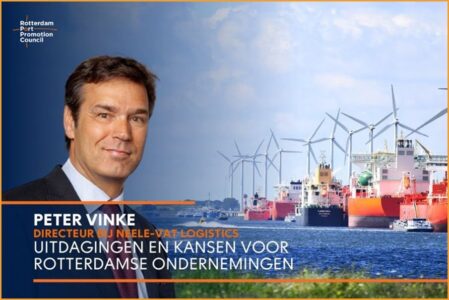 Neele-Vat Logistics, one of the larger logistics service providers in the Rotterdam region, has a branch in Oradea, Romania: Neele-Vat Logistics srl. Traffic to and from the two countries of Romania and Bulgaria has grown dramatically in recent years. This branch will allow Neele-Vat Logistics to optimally serve the Romanian and Bulgarian import and export market to and from Western Europe. The other branches are located in Rotterdam Hoogvliet, Rotterdam Botlek, Amsterdam, Zeebrugge and Moscow.
Neele-Vat Logistics, one of the larger logistics service providers in the Rotterdam region, has a branch in Oradea, Romania: Neele-Vat Logistics srl. Traffic to and from the two countries of Romania and Bulgaria has grown dramatically in recent years. This branch will allow Neele-Vat Logistics to optimally serve the Romanian and Bulgarian import and export market to and from Western Europe. The other branches are located in Rotterdam Hoogvliet, Rotterdam Botlek, Amsterdam, Zeebrugge and Moscow.
A fleet of 50 tractor units is deployed to carry out Romanian operations. The Oradea branch will be managed by Mr. Paul Rovers, who, as a Dutchman, has extensive experience in dealing with this part of Europe.
“We see the expansion of our Eastern Europe activities as an absolute spearhead in our policy for the coming years, ” said managing director Peter Vinke. “Many of our customers are shifting their production from Western Europe to Eastern Europe. But now also from the Far East to Eastern Europe. We are also seeing a sharp decline in Western European transport capacity, due in part to an aging population. With the current rising economy, we therefore need to secure our capacity on the long distances in Europe.”
E. van Wijk Logistics ties 200 tons of CO₂ with help from local carbon farmers
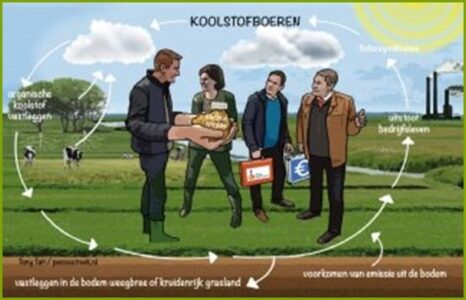 Altena is bustling with activity. Businesses, citizens and farmers alternate in the polder between Maas and Merwede. It is precisely this proximity and local cooperation that has traditionally characterized the region. Since last year, something new has been flourishing in the region. Carbon farmers work with local businesses to sequester CO₂ in farmland. The youngest shoot on the tree is E. van Wijk Logistics. For this major transporter in the region, carbon farmers will capture a total of 200 tons of CO₂ over 4 years. The community is enthusiastic about the project, which encourages cooperation between farmers and businesses and contributes to increased biodiversity and better soil life.
Altena is bustling with activity. Businesses, citizens and farmers alternate in the polder between Maas and Merwede. It is precisely this proximity and local cooperation that has traditionally characterized the region. Since last year, something new has been flourishing in the region. Carbon farmers work with local businesses to sequester CO₂ in farmland. The youngest shoot on the tree is E. van Wijk Logistics. For this major transporter in the region, carbon farmers will capture a total of 200 tons of CO₂ over 4 years. The community is enthusiastic about the project, which encourages cooperation between farmers and businesses and contributes to increased biodiversity and better soil life.
For E. van Wijk, one of the largest employers in Altena County, stewardship is very important. Managing director Ewout van Wijk likes to point out how important local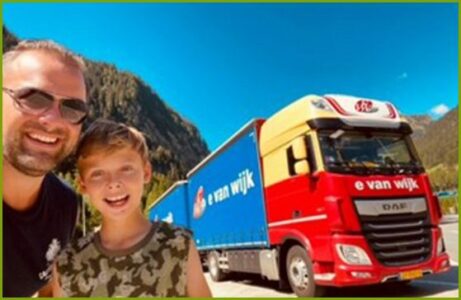 cooperation is to achieve sustainable climate ambitions: “Sustainability is a high priority for us and is part of our strategy. Since 2015, we have been working with a program that measures the CO₂ reduction we achieve. We already apply electric driving, solar panels and battery storage to reduce CO₂ emissions, but that does not make us CO₂-neutral. Offsetting is a must to take the next step. If we do start offsetting, I think it would be nice to do it locally and together with farmers. My great-grandfather had a farm and my grandfather traded with the agricultural industry. That’s where our current business came from.”
cooperation is to achieve sustainable climate ambitions: “Sustainability is a high priority for us and is part of our strategy. Since 2015, we have been working with a program that measures the CO₂ reduction we achieve. We already apply electric driving, solar panels and battery storage to reduce CO₂ emissions, but that does not make us CO₂-neutral. Offsetting is a must to take the next step. If we do start offsetting, I think it would be nice to do it locally and together with farmers. My great-grandfather had a farm and my grandfather traded with the agricultural industry. That’s where our current business came from.”
E,van Wijk has a particularly strong presence in Romania. Headquartered in Gilau, the original location on the east side of Cluj is now in use as a Used Trucks Center and body repair shop. The branches are in Cluj, Arad, Bacau, Constanta, Brasov, Pitesti and Craiova
Agriculture Sector
Fall in EU agricultural prices in the first quarter of 2024
The latest data published by the European Bureau of Statistics shows that prices of agricultural products in the European Union (EU) fell in the first quarter of 2024 compared to the same period in 2023.
The average price of agricultural products as a whole showed a 6% decline in the first three months of this year compared to the first quarter of the previous year. Also, the average price of goods and services consumed in agriculture (the means of production not related to investment) fell 11%.
After a period of disruption in which EU agricultural prices rose significantly in 2021 and the first three quarters of 2022, the pace of growth slowed and then prices began to fall.
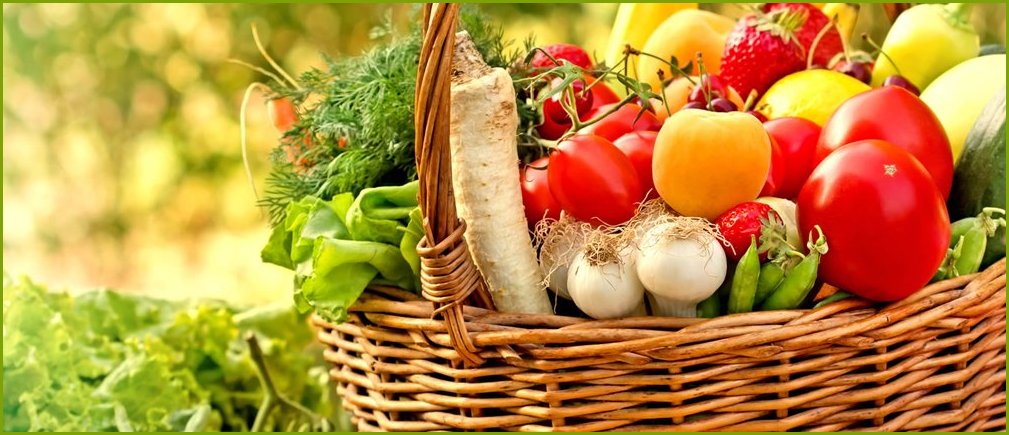
A significant drop was recorded in the average price of cereals (-28%) and milk (-12%). Prices of eggs and industrial plants (oilseeds, protein crops, raw tobacco, sugar beets, etc.) also showed a 10% downward trend, while fresh vegetable prices fell 6% (with a 33% drop to the price of tomatoes).
In contrast, the average price of potatoes rose 22% and that of fresh fruits 20% (despite a 44% drop in the price of lemons) due to unfavorable weather conditions for harvest quantities.
Among non-investment inputs, the largest price declines occurred in fertilizers and soil conditioners (-31%), animal feed (-16%) and energy and lubricants (-12%).
At the national level, most EU member states (21 of the 25 for which data are available) saw a decline in agricultural product prices in the first quarter of this year compared to the same period in 2023. The main price decreases were recorded in Hungary (-24%), Bulgaria and Romania (both by -18%), Slovakia and the Czech Republic (both by -17%).
In contrast, prices rose in five southern EU countries: Greece (+20%), Malta and Spain (both +4%), Portugal and Cyprus (both +1%).
In terms of non-investment-related inputs, prices fell in 24 of the 25 countries for which data are available, with the largest declines recorded in Croatia (-20%), Hungary (-19%), the Netherlands and Ireland (both 17%). The only increase, of 2%, was recorded in Portugal.
Farmers can submit dossiers for the purchase of agricultural machinery starting June 25.
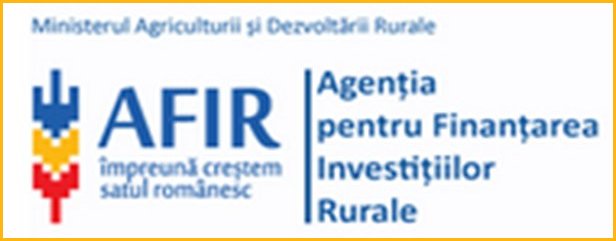 The value of the grants is over 300 million euros .The Rural Investment Financing Agency (AFIR) is opening a new application session from June 25 for those interested in accessing grants for the purchase of agricultural machinery. The funds, amounting to over 300 million euros, will be distributed through sub-measure 4.1 “Investments in Farms” within the National Program for
The value of the grants is over 300 million euros .The Rural Investment Financing Agency (AFIR) is opening a new application session from June 25 for those interested in accessing grants for the purchase of agricultural machinery. The funds, amounting to over 300 million euros, will be distributed through sub-measure 4.1 “Investments in Farms” within the National Program for Rural Development. Farmers interested in funding can apply online starting June 25, 2024, 9 a.m. The financial allocation established by the program is 310.515 million euros, divided into three components: 198 million euros is for all crops, but excluding sugar beet cultivation and investments made by associative forms, 61 million euros for sugar beet 51.515 million euros for associative forms other than those in the sugar beet sector. “The intensity of the aid granted starts at 30% and can go up to a maximum of 90%, depending on the economic size of the company, the type of beneficiary and the investments to be made through the project. The value of non-refundable The funding is between 350,000 euros and can reach up to 1,500,000 euros, depending on the economic size of the farm and the type of beneficiary: for cooperatives, producer groups and producer organizations,” AFIR representatives said. The submission session ends on September 24, 2024 at 4 p.m. to allow applicants sufficient time to correctly estimate the size of the machinery fleet according to the Applicant Guide Annex for the efficient purchase of agricultural machinery.
Rural Development. Farmers interested in funding can apply online starting June 25, 2024, 9 a.m. The financial allocation established by the program is 310.515 million euros, divided into three components: 198 million euros is for all crops, but excluding sugar beet cultivation and investments made by associative forms, 61 million euros for sugar beet 51.515 million euros for associative forms other than those in the sugar beet sector. “The intensity of the aid granted starts at 30% and can go up to a maximum of 90%, depending on the economic size of the company, the type of beneficiary and the investments to be made through the project. The value of non-refundable The funding is between 350,000 euros and can reach up to 1,500,000 euros, depending on the economic size of the farm and the type of beneficiary: for cooperatives, producer groups and producer organizations,” AFIR representatives said. The submission session ends on September 24, 2024 at 4 p.m. to allow applicants sufficient time to correctly estimate the size of the machinery fleet according to the Applicant Guide Annex for the efficient purchase of agricultural machinery.
Two innovative initiatives in the Dutch agricultural sector received international attention
Ex-pig farmer makes relaunch with Salmon Farm Maashorst
 Stop? Pig farmer John Wijdeven (54) was totally unaware of that. He was running technically bést, with his six thousand fattening pigs. Nevertheless, he participated in the Subsidieregeling sanering varkenshouderijen (SRV) for short, the sanitation scheme.John is now switching from pigs to fish: the Uden native’s yard will soon be home to the Netherlands’ first indoor salmon farm. It will be operated by John’s associate Rob Dortmans. “Fresh Dutch salmon just isn’t there,” John states. “All the farmed salmon comes from Norway or Scotland. Before it gets here, that salmon is three, four days old.”
Stop? Pig farmer John Wijdeven (54) was totally unaware of that. He was running technically bést, with his six thousand fattening pigs. Nevertheless, he participated in the Subsidieregeling sanering varkenshouderijen (SRV) for short, the sanitation scheme.John is now switching from pigs to fish: the Uden native’s yard will soon be home to the Netherlands’ first indoor salmon farm. It will be operated by John’s associate Rob Dortmans. “Fresh Dutch salmon just isn’t there,” John states. “All the farmed salmon comes from Norway or Scotland. Before it gets here, that salmon is three, four days old.”
Top three in terms of feed cost per kilogram of growth
John Wijdeven was very keen on numbers from a young age. “If I learned one thing from my father, it’s that you always have to record everything in pig farming. If you raise 100 piglets and you deliver 98, that means two have died. If you don’t record anything, you don’t know what you’re talking about.” John laughs, “My father put in a new barn in 1985. I was 17 at the time. A supplementary feeding installation came in and we could keep exact track of the results ourselves. That was still in MS-DOS, with one of those black screens with those green letters. But we could program how much feed we distributed per section. We entered the laying weight and the delivery weight and calculated daily growth, feed conversion and feed costs per kilogram of growth. Delivering on Wednesday, we had the slaughter data by Thursday or Friday. Friday afternoon you knew what you had earned, that round.” That focus on the technical ratios never disappeared. As figures from the Agrovision accounting program Pigmanager show, John has been among the top three in terms of feed cost per kilogram of growth for the last 15 years.
Pig farmer-off
And yet he is now a pig farmer. John tells how that turned out. “Marco Hol, my advisor at DLV Advies, came to me for something completely different. I don’t remember what for, but it was in August 2019. He threw the ball up: there was a buyout scheme coming up, based on the odor standard.” That was the SRV. “Well I’m here in Uden right along the A50. The village is across the highway. I then inquired with the Oost-Brabant Environmental Service: it turned out I was in spot 20 of the pig farms with the most odor nuisance. They draw a 1 kilometer circle around your farm. We are only 600 meters from Uden as the crow flies, so there were quite a few civilian homes in our circle.”
Two air scrubbers
On top of that, John saw hefty investments coming his way that would bring no business benefit. “I had one air washer that was licensed in 2009. I would have to replace that one by 2024 at the latest. In addition, I had one barn with flush gutters; that system was no longer sufficient according to the rules of the province of Brabant. I would also have to buy an air scrubber for that by January 1, 2024.” Two investments that together would require at least 2.5 tons, without bringing him even 1 gram of additional daily growth. John counted his buttons. “You start thinking. I have two daughters and a son, but there is no takeover candidate. And in itself I can handle the work just fine now, but loading pigs is pretty tough. I deliver three hundred every week; of those, I have to conduct at least 150 out of the pen with the knee behind the bulkhead.”
Amount per square meter
In the SRV scheme, production rights are taken over for the then current market value. Furthermore, you get an amount per square meter, depending on the age of the barn. John has always continued to develop the pork farm. The oldest stable dated from 1985. Subsequently, stalls were added in 1990, 1998, 2004, 2010 and 2016. “Marco pre-calculated me what I could pretty much receive for this, and that was a nice sum in my eyes. When I mentioned that amount to my father, his first reaction was: have you signed already? Soon the money will be gone!”
‘All cooperation from RFO‘
And John signed on. Together with Marco, he initiated the application. “We did get on the phone with RVO because of the deadline by which participants in the sanitation scheme had to have stopped. I have a contract with a regular piglet breeder, with six months’ notice. But the RFO gave every cooperation,” he says.
Salmon farming
But as John ended his pig farm, another branch of “animal husbandry” came his way: salmon farming. Rob Dortmans, the friend of John’s niece and godson Melanie, had the idea of starting a land-based salmon farm in the Netherlands. Dortmans chose a master’s degree in Aquaculture after his bachelor’s degree in animal science at Wageningen UR and now wants to conquer the Netherlands with fresh salmon. The first Dutch indoor salmon farm is to be built in Uden, on godfather John’s farm: Salmon Farm Maashorst.
Collaboration between two companies
Salmon Farm Maashorst will be a collaboration between two companies. Rob will run the salmon farm. Around it will be an area with hospitality, recreation and education. That will be the pakkie-an of John. The province of North Brabant and the Uden City Council are wildly enthusiastic about the plans for high-quality local food, combined with a slice of hospitality and education. Licensing did have some issues. “After all, salmon farms like we want to do here, in large basins, do not yet exist in the Netherlands.” The permit is now virtually complete. Construction should be able to start in May, the Uden entrepreneur expects.
Salmon farm Maashorst
As the demand for healthy, sustainable and locally produced products continues to grow, and with increasing pressure on conventional animal farming (due to nitrogen emissions, odor nuisance and CO2 emissions, among other things), it becomes more important than ever to find an efficient way to produce our food that has no negative impact on the environment, is environmentally friendly, technologically and economically feasible and socially acceptable.
Salmon farm Maashorst is currently in the process of creating the first salmon farm in the Netherlands. Through smart production methods and innovative filtration systems (in-house developed purification, monitoring and process control systems), we are able to provide the best animal conditions year-round, have no negative impact on the environment and manage to do so without the use of antibiotics and chemicals.
In addition, we want to engage in the transition of the agricultural sector and develop a current pig farm into a salmon farm. With this alternative and efficient form of food production (without odor, dust, nitrogen or noise pollution) we achieve more than 93% CO2 reduction compared to former pig farming and 75% CO2 reduction compared to salmon from Norway. More than 96% ammonia reduction is also achieved (>6,000 kg/year) compared to pig farms, minimizing nitrogen deposition.
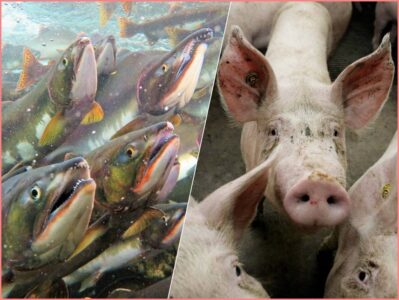 The farmed salmon will be sold entirely locally (in NL), as this fits with the sustainable way of breeding and selling that we aspire to. At 80 tons annually, the production of this salmon farm is < 0.5% of the current Dutch demand for salmon.
The farmed salmon will be sold entirely locally (in NL), as this fits with the sustainable way of breeding and selling that we aspire to. At 80 tons annually, the production of this salmon farm is < 0.5% of the current Dutch demand for salmon.
Together with leading institutions such as the WUR, Department of Aquaculture and Fisheries, Witteveen+Bos, Breukrand BV, Boerschappen, The Good Fish Foundation and various suppliers, we are working together to further develop the salmon farm in the best possible way in order to make a positive contribution to the transition to a more sustainable food system. In this, the salmon farm has a facilitating role between institutes and companies in which exchanging knowledge and building on each other’s expertise plays an essential role.
General objective: “To have the first Dutch land-based, nature-inclusive, animal-friendly and most modernly managed salmon farm operational at Uden (on a former pig farm) within 3 years, with at least 80 tons of salmon being farmed, processed and sold in the region on an annual basis.”
OPZuid project objective: “To test, validate and fine-tune the in-house developed and designed land-based freshwater salmon rearing system at commercial scale, from egg to adult fish.”
Salmon Farm Maashorst: “a healthier and more sustainable future for our nature and society.”
EU strategic project
The European grant makes it possible to establish a good concept all at once, according to Rob Dortman, salmon farm operator.
The site on Lageburchtweg is already taking shape and there is a large sign on the street side saying that this project was made possible with European Union money. Europe is paying 850,000 euros for the nursery, with the province supplementing that amount to one million.
,,The European subsidy makes it possible to establish a good concept in one go, where we do not have to make concessions on quality or animal welfare. Of course, we are very happy about that,” Dortmans had the grant maker note.
544 million euros
The salmon farm in Uden is one of 628 projects in North Brabant that have received a total of 544 million euros in European funding over the past three-plus years. That money comes from 21 different pots and accounts for ten thousand jobs.
The review of EU subsidies to Brabant comes out ahead of next week’s European elections. That list also includes 788 million euros in loans from the European Investment Bank for Brabant initiatives. Some of that money is for sustainability projects.
Europe’s grant money is intended, among other things, to spur innovation and reduce nitrogen emissions. A few other projects benefiting from the European grant: Monkeys by the Sea which works in Bergen op Zoom on vegetarian alternatives to fish (over 900,000 euros) and VivArt-X which contributes from Eindhoven to tissue repair after breast surgery (almost 500,000 euros).
Tiny fish
So in Uden, European money goes to salmon farming. Which emits 96 percent less nitrogen than the pig farm did. It also saves on emissions that the fish no longer has to travel halfway across Europe before landing on a plate somewhere in the Netherlands. Today, farmed salmon often come from Norway or Scotland and are often days away.
Salmon farm Maashorst will farm the fish itself in Uden and sell it in the region. The fish are raised in fresh water so that their poop can serve as fertilizer on surrounding plots. That would be impossible with salt water.
The breeding process has been going on for a while, with fertilized salmon eggs flown from Iceland to Brabant last summer. Tens of thousands of tiny fish first swam in a nursery pond in Odiliapeel before they could make their way to Uden. At the salmon farm, they have to grow through to the “market weight” of 4.5 kilograms before they end up as day-fresh fish on a plate in the neighborhood. Courtesy of Europe.
OPZuid ERDF 2021-2027
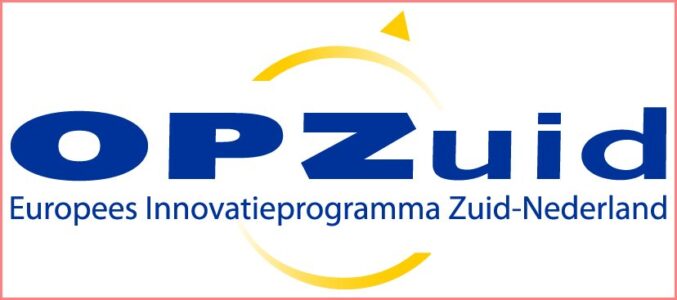 South Netherlands’ ambition with the ERDF program 2021-2027 (OPZuid) is to implement the RIS3 priorities and thus leverage and strengthen regional strengths on economy, entrepreneurship and innovation, with social and economic impact as a goal. This involves contributing to innovative solutions to five major social transitions taking place both in the southern Netherlands and globally, and enabling market players to take advantage of (inter)national market opportunities. The five transitions concern energy, climate, commodities, agriculture & nutrition and health
South Netherlands’ ambition with the ERDF program 2021-2027 (OPZuid) is to implement the RIS3 priorities and thus leverage and strengthen regional strengths on economy, entrepreneurship and innovation, with social and economic impact as a goal. This involves contributing to innovative solutions to five major social transitions taking place both in the southern Netherlands and globally, and enabling market players to take advantage of (inter)national market opportunities. The five transitions concern energy, climate, commodities, agriculture & nutrition and health
A Dutch farmer produces the world’s first ice cream made from pig’s milk
Erik Stegink has created a “pig’s milk ice cream,” and the delicacy is a hit with visitors to his Piggy’s Palace farm, where they can also see the animals on slides, reports Britain’s The Times. The taste takes some getting used to, but the world’s first ice cream made from pig’s milk is a hit in the Netherlands.
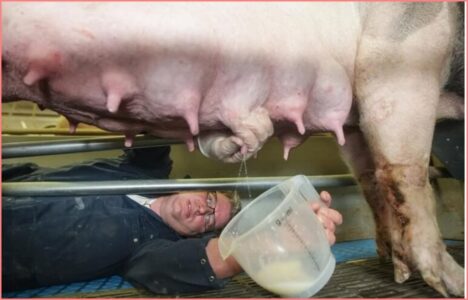 Erikt Stegink, a farmer from the village of Bathmen in the Overijssel region started making ice cream. The new delicacy, called “pig ice cream,” is a hit with visitors to Stegink’s farm “Piggy’s Palace,” where visitors can have a “pig-nic” and watch their pigs play on slides, writes Romanian G4Media.ro. “People really like it, we were almost through the first supply,” he told local TV station East. The ice cream is described as “a little greasy, nice and creamy.” “It’s delicious ice cream,” said one visitor to the farm. Goat milk ice cream is widely available in the Netherlands and, according to NOS, camel ice cream has been on sale since 2011. Pig’s milk is more similar to breast milk than cow’s milk in terms of lipids or fats, with a stronger taste described as “gamey.” It contains about 8.5% fat, compared with 3.5% in cow’s milk. In 2015, Stegink’s farm was the first in the world to commercially produce pork milk cheese in a production process that he said was “a hell of a lot of work.
Erikt Stegink, a farmer from the village of Bathmen in the Overijssel region started making ice cream. The new delicacy, called “pig ice cream,” is a hit with visitors to Stegink’s farm “Piggy’s Palace,” where visitors can have a “pig-nic” and watch their pigs play on slides, writes Romanian G4Media.ro. “People really like it, we were almost through the first supply,” he told local TV station East. The ice cream is described as “a little greasy, nice and creamy.” “It’s delicious ice cream,” said one visitor to the farm. Goat milk ice cream is widely available in the Netherlands and, according to NOS, camel ice cream has been on sale since 2011. Pig’s milk is more similar to breast milk than cow’s milk in terms of lipids or fats, with a stronger taste described as “gamey.” It contains about 8.5% fat, compared with 3.5% in cow’s milk. In 2015, Stegink’s farm was the first in the world to commercially produce pork milk cheese in a production process that he said was “a hell of a lot of work. 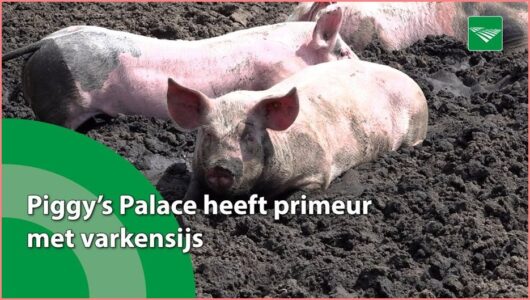 “It takes so much time and so many gallons for one pound of cheese, it becomes very expensive. This ice cream also takes time, but we need less milk for it,” he said. His 250 sows must be hand-milked because no machines have been developed for milking pigs, as it was considered commercially unfeasible in the past. “A sow gives milk about 12 to 14 times a day. The pigs are there, but the farmer is also ‘in between,'” he said. “The teat we ‘undress’ by hand. We collect the milk in a small container. The piglets here also drink from several other sows, so they are never short of anything
“It takes so much time and so many gallons for one pound of cheese, it becomes very expensive. This ice cream also takes time, but we need less milk for it,” he said. His 250 sows must be hand-milked because no machines have been developed for milking pigs, as it was considered commercially unfeasible in the past. “A sow gives milk about 12 to 14 times a day. The pigs are there, but the farmer is also ‘in between,'” he said. “The teat we ‘undress’ by hand. We collect the milk in a small container. The piglets here also drink from several other sows, so they are never short of anything
Murfatlar Wine triumphs at the prestigious competition “Concours Mondial de Bruxelles 2024”
Murfatlar Vinul , a reference name in the country’s wine industry, gained international recognition by winning several prestigious medals at the “Concours Mondial de Bruxelles 2024,” both for its recently launched Aerosol and Statornic ranges, as well as for 3 Hectare, is a wine that needs no further introduction.
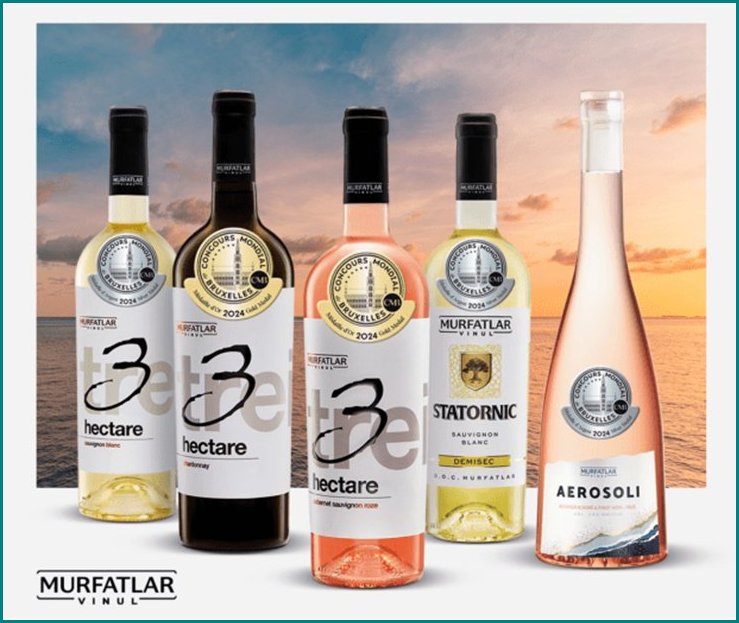
One of the most important and respected in the world, this competition brings together wine experts and elite tasters to judge the best wines from different wine regions around the world.
In the competition, Murfatlar Vinul won two gold medals for 3 Hectare Cabernet Sauvignon Pink 2023 and 3 Hectare Chardonnay 2022. The former is a light wine, with fresh aromas of forest fruits and medium acidity, and the latter impresses with its complexity, with notes of tropical fruit and a slight touch of vanilla from aging in oak barrels. Also from the 3-acre range, Sauvignon Blanc 2023 was also awarded a silver medal, this is a wine with medium acidity and fresh aromas of wild flowers and tropical fruit.
Two more silver medals went to Murfatlar Vinul pentru Aerosoli Feteasca Neagra & Pinot Noir Pink 2023, an elegant blend with delicate aromas of raspberry and citrus, with a fine structure and a persistent finish, and to Statornic Sauvignon Blanc 2022, a wine with pleasing acidity, characteristic of green fruit.
“We are very honored and proud of this success that brings Romanian wines to the forefront of the international scene of oenological excellence. The medals achieved are a confirmation of our team’s passion and work to create exceptional wines. Concours Mondial de Bruxelles is a milestone in the industry and the fact that our wines were rated at this level motivates us to continue on the path of excellence,” said Cosmin Popescu, Managing Partner of Murfatlar Vinul Romania SA.
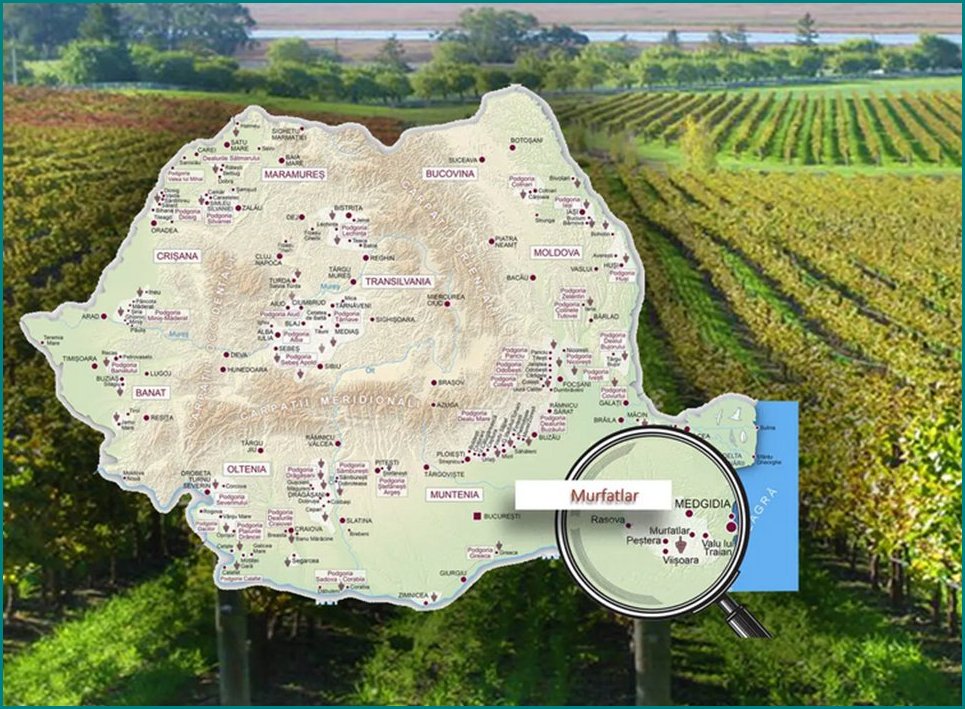
This year’s competition took place June 7 through 9 in Guanajuato, Mexico, where as many as 7,500 white and red wines from 42 countries around the world were presented. For 2025, organizers have chosen Romania as the next destination for the rosé competition. This will take place between March 28 and 30, 2025 in Constanța.
The medals obtained at the Concours Mondial de Bruxelles put Murfatlar on the world map of winemaking, proving that Romanian wines can successfully compete with the most famous international labels.
Murfatlar Vinul is one of the largest and most respected wine producers in the country, with a long tradition in viticulture and wine production. Founded in 1943 under the name Murfatlar Winery Experimental Station, the company currently has more than 3,000 acres in the Murfatlar, Valul lui Traian, Porta Albă and Siminoc areas. Murfatlar Vinul’s portfolio includes red, white and rosé, sweet, semi-sweet, semi-dry, dry and liqueur wines, thus covering all consumer segments and recognized by the authorities in the field through the numerous awards given.
Shipbuilding sector
Construction of new marine vessels in the Netherlands is on the rise
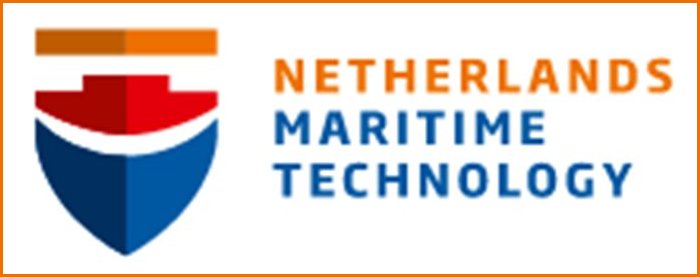 Sector year figures 2023 outline positive development – Construction of new seagoing vessels in the Netherlands is on the rise. By 2023, 34 marine vessels will have been delivered. This equates to an estimated value of as much as €410 million. This is a significant increase from 2022. At the end of 2023, there were 98 ocean-going vessels in the order book, with a total value of about €1.5 billion. In addition, Dutch shipyards also built many inland vessels and superyachts. This can be read in the Sector Year Special presented Friday, June 21, by Netherlands Maritime Technology (NMT).
Sector year figures 2023 outline positive development – Construction of new seagoing vessels in the Netherlands is on the rise. By 2023, 34 marine vessels will have been delivered. This equates to an estimated value of as much as €410 million. This is a significant increase from 2022. At the end of 2023, there were 98 ocean-going vessels in the order book, with a total value of about €1.5 billion. In addition, Dutch shipyards also built many inland vessels and superyachts. This can be read in the Sector Year Special presented Friday, June 21, by Netherlands Maritime Technology (NMT).

One reason for this growth is sustainability. Many ships need to be replaced or modified. This is consistent with the Maritime Master Plan. Created by the maritime sectors, this plan aims to develop, build and operate reliable and competitive climate neutral ships in the Netherlands.
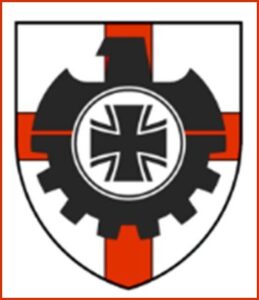 Sustainability and – attached to it – the Maritime Master Plan contribute to the positive expectation for the growth of the sector in the coming years. This growth is good news for the strategic autonomy of the Netherlands as also described in the Maritime Manufacturing Industry Sector Agenda.
Sustainability and – attached to it – the Maritime Master Plan contribute to the positive expectation for the growth of the sector in the coming years. This growth is good news for the strategic autonomy of the Netherlands as also described in the Maritime Manufacturing Industry Sector Agenda.
The German Navy is getting its urgently needed additional maritime capability through the purchase of two additional F126 frigates. Last week, the budget committee of the German Bundestag gave the green light for the purchase of a fifth and sixth ship. Today, the procurement organization of the German Armed Forces (BAAINBw) and Damen Naval signed the contract for two additional ships, so that a total of six frigates will now be built.
BAAINBw is the Federal Office of Equipment, Information Technology and Utilization of the Bundeswehr in Koblenz
“This is great news and we are honored that our German customer has the confidence in us and the F126 design to order two additional vessels,” said Damen Naval General Manager Roland Briene. “This decision allows us to expand the ‘Niedersachsen’ class to six ships. It is the fastest way to expand and modernize the German Navy’s surface fleet. This decision also benefits the German procurement organization and the industry involved. Having more ships of the same class brings many advantages.”

The first frigate will be delivered in 2028. Ship five and six will be delivered in 2033 and 2034, respectively.
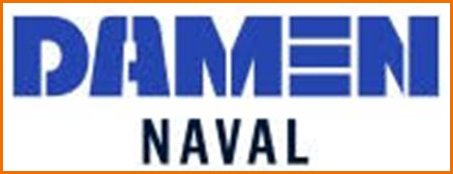 Construction of the two additional F126 frigates will also take place entirely in Germany. In the coming months, work will begin in parallel at the German Naval Yards shipyard in Kiel, which is also involved in the project, and at Blohm+Voss NVL’s yard in Hamburg. The stern will be built at the Peene-Werft in Wolgast, while in Kiel the foreshores will be built and the two parts joined. The vessels will then be shipped to Hamburg for final outfitting, commissioning and testing. Hundreds of suppliers throughout Germany are involved in the project.
Construction of the two additional F126 frigates will also take place entirely in Germany. In the coming months, work will begin in parallel at the German Naval Yards shipyard in Kiel, which is also involved in the project, and at Blohm+Voss NVL’s yard in Hamburg. The stern will be built at the Peene-Werft in Wolgast, while in Kiel the foreshores will be built and the two parts joined. The vessels will then be shipped to Hamburg for final outfitting, commissioning and testing. Hundreds of suppliers throughout Germany are involved in the project.
In June 2020, BAAINBw awarded the construction contract for the F126 frigates to Damen Naval, along with subcontractors Blohm+Voss and Thales. With a length of 166 meters and a displacement of up to 10,000 tons, the F126 frigates will be the largest in the German naval fleet. The versatile multi-mission ships can operate around the world and in all conditions, from the tropics to the polar regions.
Damen introduces the all-electric vessel FCS 3210
At this year’s Seawork show in Southampton, UK, Damen Shipyards Group will unveil its newest ship. The all-electric Fast Crew Supplier (FCS) 3210 E represents the next step forward in crew transfer solutions, paving the way for emission-free transportation of crew and cargo to offshore locations.
Optimal comfort, minimal drag
Damen developed the FCS 3210 in response to market feedback calling for a larger crew vessel. The design is based on Damen’s successful FCS 2710. It features the same combination of Damen’s Axe Bow hull shape with a rounded tunnel.
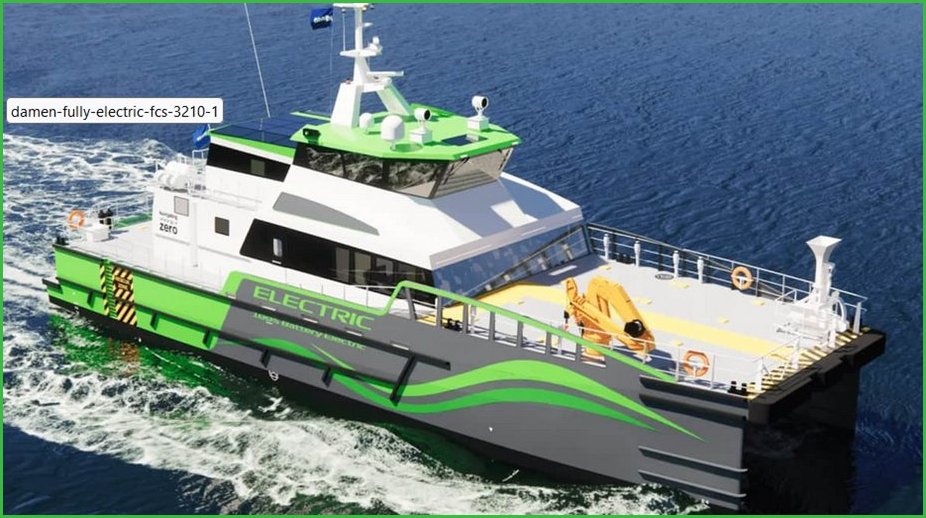
The result is optimum comfort, reduced deck slamming on wet surfaces and minimal resistance in water. With the greater length of the FCS 3210, this effect is even more pronounced, ensuring longer uptime. In the rear, the FCS 3210 offers more room for a larger deckhouse and more deck capacity.
The next step forward
Shortly after the introduction of the FCS 3210, Damen received an order for three diesel-electric versions of Purus. After this, Damen took the next step forward with the development of an all-electric version with no emissions.
The vessel features an all-electric Volvo IPS system, allowing it to run solely on battery power. This enables the FCS 3210 E to sail at high speeds to offshore wind farms up to 25 nautical miles offshore. Upon arrival, it is charged through a charging system integrated into a turbine, substation or SOV before returning to shore.
Process of continuous evolution
Damen Product Manager High Speed Craft Wim Boerma says: “Our portfolio for crew tranfers has been constantly evolving since its introduction. With an increasing focus on sustainability, we have developed an all-electric version to enable zero-emission activities. The FCS 3210 E builds on the proven performance of its predecessors and applies lessons learned in our development of a number of all-electric vessels.
“The challenge in preparing ships for alternative propulsion often lies in knowing what fuels will be available and affordable in the future. For a ship like this, sailing a predictable route to a location with an abundance of clean energy, the solution is obvious. With the FCS 3210 E, operators today have access to the crew transporter of the future. The technology is fully developed and we are ready to build.
Fuel flexible solution
To give operators the flexibility to operate the FCS 3210 in locations further offshore, Damen has also developed a version with full methanol propulsion. Currently, the engine technology that allows a vessel in this power range to run on methanol has not yet reached maturity. When it does, the FCS 3210 Hybrid is prepared for quick, cost-effective conversion.
Damen officially introduced the latest additions to its Twin Axe FCS series at Seawork in Southampton.
Damen reportedly sues Romania over contract shipyard agreement with Mangalia yard (Santierul Naval 2 Mai)
The legal action comes after Damen has already asked the International Court of Arbitration in Vienna to terminate the 2018 association agreement under which the Romanian state became the majority shareholder of Damen Shipyards Mangalia, with 51% of the shares.
“Damen Group has no information to communicate at this time,” the Dutch company told all Romanian media on April 24 who contacted the company for more information. No further comments from Damen are currently available.
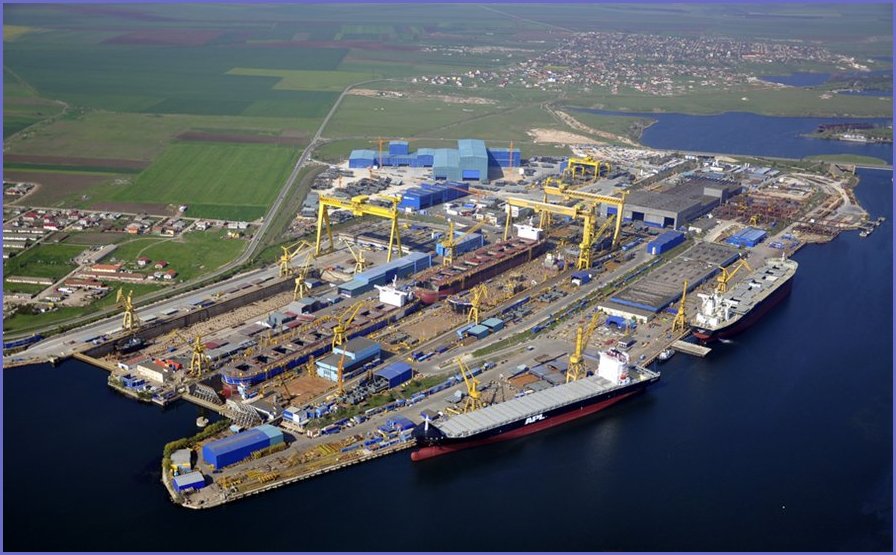
The defendant (in the lawsuit at the Vienna International Court of Arbitration) is the Romanian state-owned company Santierul Naval 2 Mai, controlled by the Ministry of Economy, which owns 51% of Damen Shipyards Mangalia, according to Profit.ro, which also writes about some of the compensation requested by the Dutch company without, however, specifying whether the compensation is to be paid by Santierul Naval 2 Mai or by the Romanian state.
In 2018, Damen acquired the majority stake (51%) in Damen Shipyards Mangalia from Daewoo under the condition of passing a 2% stake to the Romanian state (represented by the state-owned Santierul Naval 2 Mai) in exchange for management rights. However, the agreement contradicts legislation adopted by Romania in 2023, as the country’s commitments under the National Resilience Facility and as part of the steps taken toward OECD membership.
What preceded it
The Dutch demand the bankruptcy of the Mangalia shipyard. The conflict between the Romanian state and the Damen group reaches a higher level: the Dutch are demanding the bankruptcy of the Mangalia shipyard, from which they were removed by uninspired government decisions. Damen claims it needs to collect debts of 160 million euros. It is the last week in which employees work. Starting Monday, most will enter technical unemployment. Damen, which owns 49% of the Mangalia shipyard, is demanding recovery of a number of loans made over the past six years. The Dutch managed the construction site until last summer, when the government, under the pretext of some provisions of the PNRR, took over. The Dutch seem determined to cut ties altogether. They were the ones who brought in the orders for the construction site.

The last two projects, a barge and a small offshore structure, were completed last month. As of June 3, about 80 percent of the workers will be technically unemployed. Only two to three hundred people will be kept at the site…: Damen wants the money and wants to leave, it no longer wants to continue this partnership and then the role of the Romanian state, being the majority shareholder, will take over operations. In view of the insolvency procedure, funds from the state budget can be allocated for the payment of technical unemployment benefits, for the payment of salaries for a certain period. The bankruptcy filing is not Damen’s only lawsuit. The company has also taken the Romanian state to court at the Arbitration Court in Vienna, claiming damages for the government’s failure to comply with certain contractual conditions. The Dutch saved the yard from possible bankruptcy in 2018 when they acquired Daewoo’s 51% stake. After intensive negotiations, they ceded 2% free of charge to the company’s other shareholder, the Romanian state. Thus, the state became the majority, but the deal stipulated that Damen would take care of the company. Last year, through changes in the corporate governance law, the government removed the Dutch management from the Mangalia site. Relations with the Romanian state had long been strained. Damen has been negotiating the takeover with Daewoo since 2017 and reached an agreement to acquire the majority stake for 26  million euros to take over. The amount was small, but the construction site was full of debt. In early 2018, the transaction was undone by the Tudose government, which out of the blue decided to exercise a pre-emption right over the yard. The state had neither the financial strength nor the ability to secure orders to make the yard viable, but said it wanted to buy. A compromise was eventually reached in which Damen would sell the majority stake but retain management. The Dutch received orders that kept the shipyard alive. The acquisition took place as part of preparations to purchase corvettes. But the government in 2019 chose Naval Group of France, which should have built the ships at the Constanta shipyard. The project was clinically dead until last year, when the tender result was annulled. According to procedure, the Army should have negotiated directly with the Dutch at Damen. The company was in second place, with a bid of 1.25 billion euros. But the Defense Ministry canceled the tender altogether. He claimed he did not have the money to cover the price difference. A difference of only 50 million euros!
million euros to take over. The amount was small, but the construction site was full of debt. In early 2018, the transaction was undone by the Tudose government, which out of the blue decided to exercise a pre-emption right over the yard. The state had neither the financial strength nor the ability to secure orders to make the yard viable, but said it wanted to buy. A compromise was eventually reached in which Damen would sell the majority stake but retain management. The Dutch received orders that kept the shipyard alive. The acquisition took place as part of preparations to purchase corvettes. But the government in 2019 chose Naval Group of France, which should have built the ships at the Constanta shipyard. The project was clinically dead until last year, when the tender result was annulled. According to procedure, the Army should have negotiated directly with the Dutch at Damen. The company was in second place, with a bid of 1.25 billion euros. But the Defense Ministry canceled the tender altogether. He claimed he did not have the money to cover the price difference. A difference of only 50 million euros!
Multraship transfer new tug from Damen Shipyards
Multraship Towage & Salvage held a christening ceremony May 30 to christen their newest tug Multratug 35 in their home port of Terneuzen, Netherlands. The vessel is a Damen ASD Tug 3212. Multraship’s HR Manager, Ms. Chrétienne Huisman, took credit and wished the tug and her crew good wind and good sea conditions.
Damen and Multraship signed the contract for the vessel last June – along with a second, identical ASD Tug 3212. Prior to the contract, Damen had already begun building the tugs as part of its practice of building standard vessels for stock, guaranteeing its customers quick delivery of a reliable product.
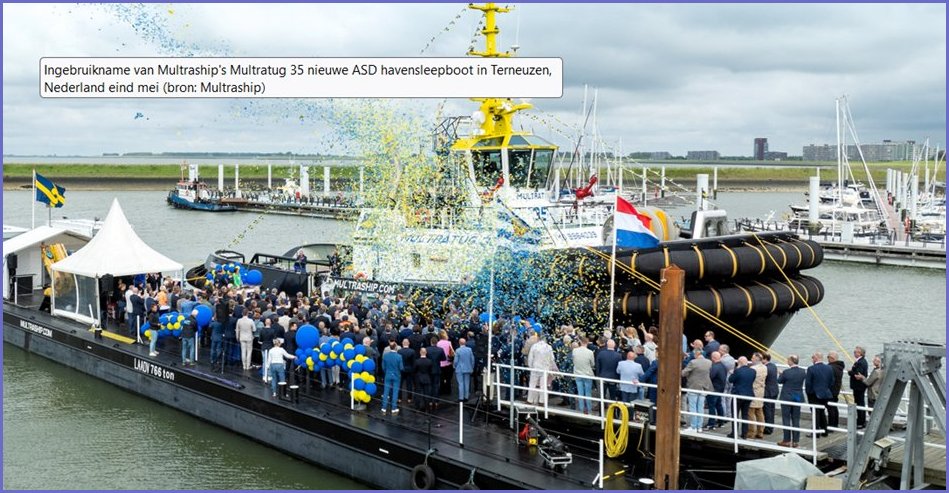
Multraship’s general manager, Captain Leendert Muller, said, “Our company has grown to meet additional client and project requirements, and as such we have invested in additional vessels and expanded our team both at sea and ashore.”
“Along with Multratug 35, we ordered three ASD tugs from Damen, which were built in Vietnam. Multratug 34, an ASD Tug 2813, has already been delivered and is in operation in Oman. The third, Multratug 36, was delivered in April and is now sailing on her own keel to the Netherlands. She is expected to arrive in early July after a journey of about 21,500 kilometers. The Multratug 35 and 36 are 32-meter tugs based on the design of the ASD Tug 3212 for deep sea and coastal towing, salvage and other operations,” Muller said.

Both the Multratug 35 and its future sister are 32-meter tugs with a towing capacity of 88 tons. Although built to Damen’s proven design, they have been significantly upgraded to Multraship’s high standards and requirements with a range of options. These include compliance with IMO Tier III requirements. This is achieved with the installation of Damen’s internally developed Marine NOX Reduction system.
This modular selective catalytic reduction (SCR) system reduces NOX emissions by 80% compared to IMO Tier II requirements. In addition, Damen equipped the tug with FiFi 1 fire suppression systems and upgraded it for anchor handling and related offshore operations. The crew accommodation area has been improved with additional insulation and rubberized for greater comfort.
Damen Sales Director Benelux, Mijndert Wiesenekker, said, “On behalf of Damen, we congratulate Multraship with their new vessel and thank them for the trust they have once again placed in Damen. We are convinced that Multratug 35 will be a positive addition to the Multraship fleet and will contribute to the company’s towing and specific project activities. We look forward to seeing the vessel in operation and the arrival of her sister ship in the coming weeks.”
Muller noted that demand for Multraship’s services is primarily driven by project requirements. However, it also reflects Multraship’s ongoing efforts to maintain a high-quality and diverse fleet that enables them to handle both complex and routine port and sea towage requirements, as well as salvage and emergency response incidents.
“With these new additions to our fleet, we remain committed to providing the highest level of service. Part of this is ensuring that our fleet is equipped to provide fast, reliable and safe operations at all times. We know we can rely on Damen to meet our specifications and deliver high-specification vessels, and we are very pleased to formally welcome the Multratug 35 to our fleet,” Muller said.
Economical developments
Approval of trilateral (economic) cooperation in Romanian-Moldovan-Ukrainian triangle
In the context of geopolitical developments and changing economic opportunities, entrepreneurs in Romania, Moldova and Ukraine are urged to adopt a three-pronged approach in their business strategies. This change aims to encourage new forms of cooperation in the face of regional challenges and strengthen economic ties between the three nations.
Romania has become an essential partner for Ukraine, facilitating access to markets and providing a favorable environment for investment. Notable partnerships include DTEK in the energy sector, Biosphere in household products and N-iX in IT, taking advantage of Romania’s strategic position and economic openness. The ports of Constanța and Galati strengthened their role as vital logistics hubs, supported by global players such as Maersk and DP World.
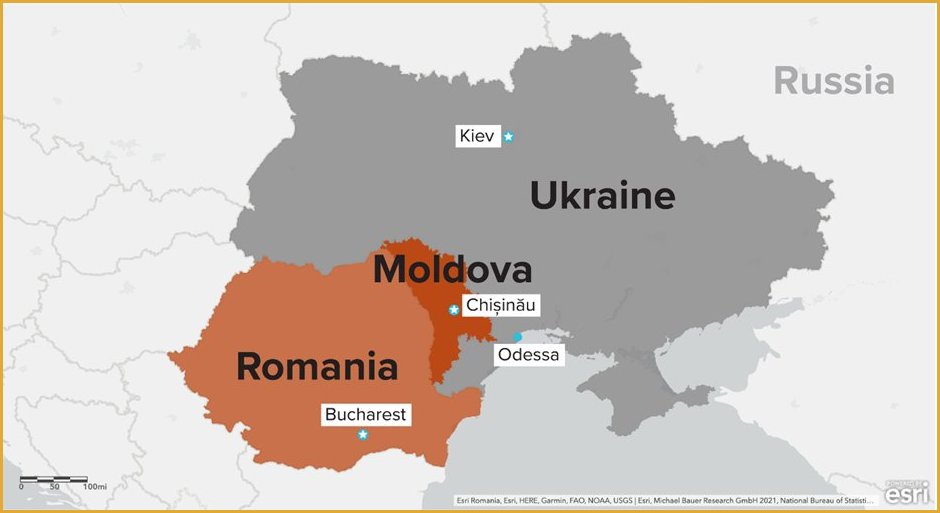
The symbiotic relationship between Romania and Ukraine offers Moldova opportunities to act as a bridge, benefit from its expertise and facilitate trade between the two countries. Moldova’s economy, bolstered by increasing exports and absorption of foreign aid, positions the country as a resilient partner in the region, with companies like Trans-Oil Group contributing to cross-border economic integration.
“Moldova plays a crucial role as an intermediary in trilateral cooperation between Romania and Ukraine,” said an economic analyst. “This role is essential in the context of post-conflict reconstruction efforts in Ukraine, with Romania serving as a gateway for Ukrainian exports.”
As Ukraine reassesses its economic strategies in the context of geopolitical tensions, Romania’s role as a channel for Ukrainian exports is becoming increasingly important, with Moldova facilitating this process. Backed by international energy interconnection efforts, trilateral cooperation promises transformative economic growth, positioning the region as a key player in Europe.
“As we navigate the complexities of security and long-term prospects,” noted one regional expert, “entrepreneurs from Romania, Moldova and Ukraine are encouraged to work together and take advantage of the economic potential of trilateral cooperation.”
The momentum toward trilateral engagement underscores the region’s commitment to becoming a robust economic center, offering ample opportunities for regional stability and growth. As governments pave the way for trilateral dialogues, enterprising communities are urged to take advantage of this momentum to establish lasting economic ties.
Foreign direct investment rose 34.14% in the first four months of 2024
Direct investment by non-residents in Romania totaled 3.230 billion euros in the first four months of this year, up 34.14% compared to 2.408 billion euros in the same period of 2023, according to data published Thursday by the National Bank of Romania (BNR).
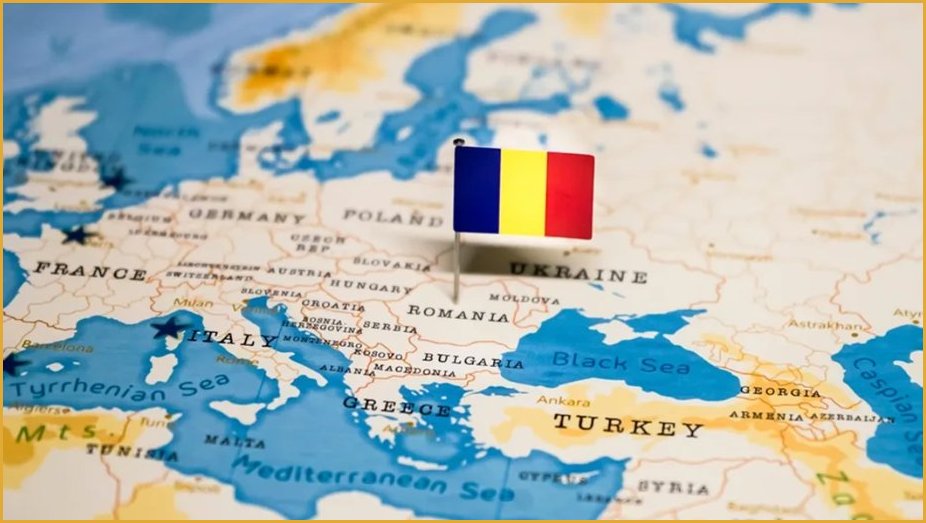
“Direct investment by non-residents in Romania totaled 3.230 billion euros (compared to 2.408 billion euros in the January-April 2023 period), of which equity holdings (including estimated reinvested earnings) had a net value of 3.014 billion euros, and intra-group loans recorded a net value of 216 million euros.According to BNR, the current account of the balance of payments in the January-April 2024 period showed a deficit of 6.576 billion euros, 26.68% higher compared to the deficit of 5.191 billion euros in the January-April 2023 period.
According to the data centralized by the National Office of the Commercial Register (ONRC), in the first four months of 2024 in Romania a number of 2,308 companies with foreign capital were established, an increase of 0.9% compared to the comparable situation. period in 2023,
The 2,308 new companies had issued capital totaling over $12.4 million, a 46.4% increase compared to the issued capital of the January-April 2023 registered companies of $8.47 million.
At the end of April 2024, there were 253,534 companies with foreign equity participation in Romania. The value of the issued capital was more than $70.58 billion.
The largest number of companies with foreign participation was among investors from Italy, 53,077 respectively (issued capital of about $3.37 billion), but the highest value of share capital belongs to Dutch companies, $13.063 billion respectively, among 6,146 companies.
European budgets: Romania biggest sinner
For the first time since the outbreak of the corona crisis, Brussels is again considering the opening of the excessive deficit procedure. In 2020, EU countries decided to temporarily put their budget rules out of brackets, so they temporarily did not have to abide by them
Normally, member states are allowed to have public debt of up to 60% of their gross domestic product and a budget deficit of no more than 3% of GDP, but because of the pandemic, they were given plenty of room to financially support their citizens and businesses. Then EU finance ministers decided to put the budget rules on hold in 2021, 2022 and 2023 as well, as they continued to experience economic headwinds after the lockdowns were lifted due to the Ukraine war and energy crisis.
Thus, the fiscal rules did not come back into force until Jan. 1, so the Commission was able to pull the “excessive deficit procedure” out of a drawer again. In recent years, only one country was on the financial penalty bench, based on mediocre 2019 economic data: Romania. On Wednesday, Dombrovskis and Gentiloni noted that Bucharest has paid little heed to recommendations from Brussels in recent years and has not shown a healthier fiscal policy. Romania ends up with a deficit of 6.9% of its GDP this year, making it by far the biggest sinner.
France, Italy, Poland, Belgium, Hungary, Malta and Slovakia have also been worry children in Brussels for much longer. France has had budget deficits higher than 3% more often than not since European budget rules were agreed upon in 1997. The country, like Italy and Belgium, among others, has also had public debt above 60% of GDP for years. Until now, the country has remained unpunished, as have all other member states. Fines were never handed out by the Commission.
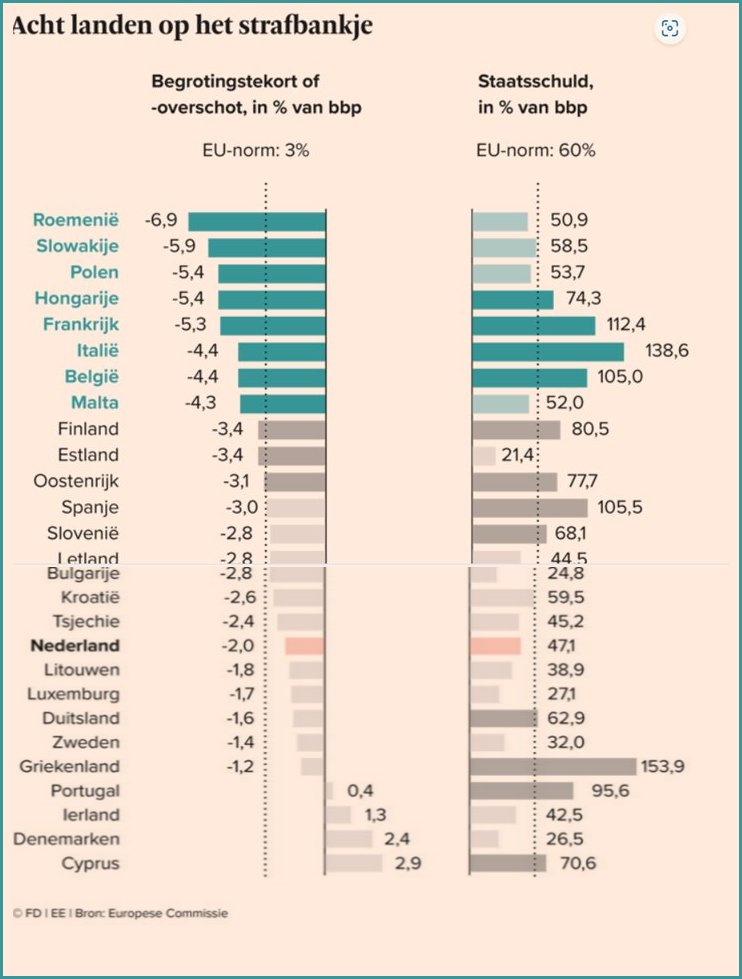
Faster tap on the fingers
The Commission is under great pressure to enforce the budget rules now though. EU countries such as Germany and the Netherlands, which value fiscal discipline and fear a new euro crisis, finally agreed earlier this year to relax the rules, but in exchange for handing out penalties more quickly. Countries with weak public finances will have more time to meet the two standards, especially if they make useful investments in key European goals such as climate, digitalization and defense. At the same time, they must show concrete improvements from now on.
Based on recently published figures, these are far from the case. For example, according to Brussels, France will reach a budget deficit of 5.3% this year and 5% in 2025. Public debt is expected to exceed 112% by 2024.
Of additional concern is the outcome of the election (second round not yet known at the time of composing newsletter) In the polls, Marine Le Pen’s radical/extreme-right Rassemblement National is doing very well and a left-wing alliance is also thriving. In contrast, President Emmanuel Macron’s Renaissance Party is taking heavy hits. Le Pen’s plans do not bode well for the French treasury: while Macron wants to cut spending, she is aiming for tax cuts and higher spending in the public sector. Financial markets are concerned: French government bond yields rose again Wednesday.
Geopolitical developments
American soldiers in Moldova, Dutch soldiers in Romania. Why is their mission Putin’s nightmare?
An American military C-17 aircraft landed in Chisinau on May 18 with American soldiers and military and medical equipment on board. The U.S. Embassy in Moldova has announced the U.S. mission to support an exercise called Peace Shield. According to Embassy 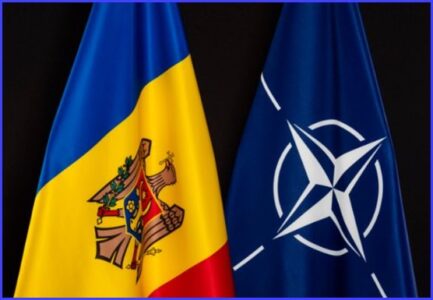 , the plane was carrying 35 military personnel from the North Carolina Air National Guard and US Air Forces Europe. They will work with the ministries of the Republic of Moldova “to implement response tactics aimed at ensuring the best protection of Moldovan citizens in the event of civil emergencies The aircraft also delivered medical and defense equipment that would be donated to the Ministry of Defense of the Republic of Moldova as part of U.S. aid. “The United States is proud to work with the government and people of the Republic of Moldova to build a democratic, prosperous and secure future,” the embassy statement said. Pro-Russian activists and their supporters in the Kremlin are deeply concerned about US military aid to Moldova and fear an intervention by Romania. They announced the formation of a political coalition on the eve of Moldova’s presidential elections, scheduled for Oct. 20.
, the plane was carrying 35 military personnel from the North Carolina Air National Guard and US Air Forces Europe. They will work with the ministries of the Republic of Moldova “to implement response tactics aimed at ensuring the best protection of Moldovan citizens in the event of civil emergencies The aircraft also delivered medical and defense equipment that would be donated to the Ministry of Defense of the Republic of Moldova as part of U.S. aid. “The United States is proud to work with the government and people of the Republic of Moldova to build a democratic, prosperous and secure future,” the embassy statement said. Pro-Russian activists and their supporters in the Kremlin are deeply concerned about US military aid to Moldova and fear an intervention by Romania. They announced the formation of a political coalition on the eve of Moldova’s presidential elections, scheduled for Oct. 20.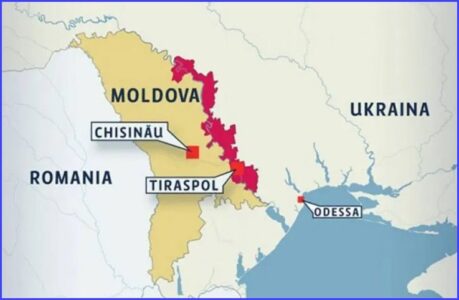
Putin is pouring tens of millions of dollars into the anti-Maia Sandu opposition. He charges that Moldova is “dissolving” in Romania. The coalition announced in Moscow was organized under the auspices of fugitive oligarch Ilan Şor, who had been convicted in absentia of fraud. “The President of the Republic of Moldova, Maia Sandu, proudly declared that she is a Romanian citizen,” writes the pro-Kremlin channel Telegram/Rybar. “Sandu dreams of annexing Moldova to Romania, but we should not forget that Gagauzia and the unrecognized Transnistria are far from Romanian cultural influence. Judging from the state of mind of Moldovans in Romania, life there is difficult for non-Romanians: it is not difficult to imagine what will happen to the Russian and Russified population in the “beautiful Romania of the future,” writes Telegram/Rybar. Read also: Russia, an attack on Romania and Moldova: the Moldovan language is older than the Romanian language Russia has 1,500 troops in Transnistria, a narrow strip of land between Moldova and Ukraine that seceded in 1992 after a brief conflict. At the same time, the Russians are watching with concern all the military maneuvers taking place in Romania.
 Soldiers of the Dutch Army arrived at Campia Turzii 71 Air Base on May 14 with a military cargo plane from the Spanish Air Force to participate in the military exercise Swift Response 24. More than 5,000 soldiers and 320 pieces of equipment from seven allied and partner states will participate in the multinational exercise SWIFT RESPONSE 24/DEFENDER 24, hosted by the U.S. in Romania until May 24. Army Europe and Africa (USAREUR-AF). Read also: US military begins exercise with those from Republic of Moldova. What is their goal? Swift Response is part of Steadfast Defender 24, NATO’s largest military exercise since the Cold War. It is a dynamic US Army-led exercise in Europe and Africa, taking place across Europe from the Baltics to the Balkans. Focusing on the ability of allied air forces to respond quickly and effectively to crises, the Kremlin sees in the landing exercises a possible military operation to take over Moldova, along with Transnistria and Gagauzia, which Putin has asked for help.
Soldiers of the Dutch Army arrived at Campia Turzii 71 Air Base on May 14 with a military cargo plane from the Spanish Air Force to participate in the military exercise Swift Response 24. More than 5,000 soldiers and 320 pieces of equipment from seven allied and partner states will participate in the multinational exercise SWIFT RESPONSE 24/DEFENDER 24, hosted by the U.S. in Romania until May 24. Army Europe and Africa (USAREUR-AF). Read also: US military begins exercise with those from Republic of Moldova. What is their goal? Swift Response is part of Steadfast Defender 24, NATO’s largest military exercise since the Cold War. It is a dynamic US Army-led exercise in Europe and Africa, taking place across Europe from the Baltics to the Balkans. Focusing on the ability of allied air forces to respond quickly and effectively to crises, the Kremlin sees in the landing exercises a possible military operation to take over Moldova, along with Transnistria and Gagauzia, which Putin has asked for help.
The Russians have begun delivering parts for the Paks 2 nuclear power plant in Hungary. They will be transported across the Danube
The nuclear power plant in Paks, Hungary, is made with Russian technology. Russian company Rosatom has begun delivering to Hungary the first major element for the future Paks 2 nuclear power plant – a melting trap, according to Hungary’s Minister of Foreign Affairs and Relations Peter Szijjártó, reports Neftegaz. The minister noted that this element, installed under the nuclear reactor ship for station safety in case of a  accident, weighs as many as 16 Airbus passenger aircraft. The device, also called melt stage, is transported in parts for further assembly at the installation site. According to Szijjarto, the elements of this construction are already on barges and have begun their journey to Paks along the Don River, to be loaded onto ships on the Black Sea. They will sail up the Danube on barges. “The device is expected to be delivered to Hungary before the end of summer, subject to favorable water conditions in the Danube,” the Hungarian official said. Without specifying the exact route from the Black Sea to the Danube, it is assumed that it will be unloaded at a Bulgarian port and run along the Bulgarian bank of the Danube. Another option would be for the ship with the factory parts to be unloaded in Constanța and go to us, but that is less credible given the tense relations between Romania, as part of NATO, and Russia. Bulgaria, although also a member of NATO, has better relations with the Russians.
accident, weighs as many as 16 Airbus passenger aircraft. The device, also called melt stage, is transported in parts for further assembly at the installation site. According to Szijjarto, the elements of this construction are already on barges and have begun their journey to Paks along the Don River, to be loaded onto ships on the Black Sea. They will sail up the Danube on barges. “The device is expected to be delivered to Hungary before the end of summer, subject to favorable water conditions in the Danube,” the Hungarian official said. Without specifying the exact route from the Black Sea to the Danube, it is assumed that it will be unloaded at a Bulgarian port and run along the Bulgarian bank of the Danube. Another option would be for the ship with the factory parts to be unloaded in Constanța and go to us, but that is less credible given the tense relations between Romania, as part of NATO, and Russia. Bulgaria, although also a member of NATO, has better relations with the Russians. 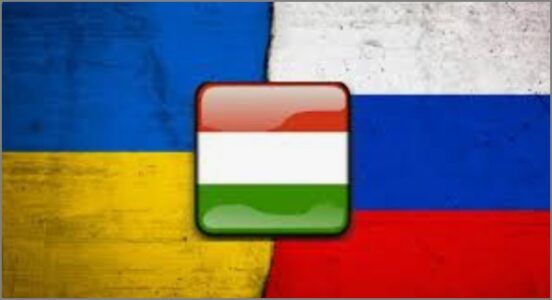 In Paks, the modernization of port facilities continues to house this part of the future station. The Hungarian foreign minister also mentioned that permission has been received for excavation work at the site below the first power plant at a depth of 23 meters, and that the goal is still to pour the first layer of concrete by the end of 2024. Currently, 50% of electricity is produced from Hungary and 1/3 of the energy consumed comes from the Paks nuclear power plant. Hungary, in cooperation with the Russians, is building two new nuclear power plants that will double its capacity from 2,000 MW to 4,400 MW. The Russians are also providing some of the money, in the form of a loan, and will provide the components and related engineering. The entire project will cost 12.5 billion euros and is expected to be completed in the early years of the 4th decade. The officially assumed deadline is 2032. Romania has also included in the project the construction of two new reactors at the Cernavodă nuclear power plant. Cost of 8-9 billion euros and completion date 2032.
In Paks, the modernization of port facilities continues to house this part of the future station. The Hungarian foreign minister also mentioned that permission has been received for excavation work at the site below the first power plant at a depth of 23 meters, and that the goal is still to pour the first layer of concrete by the end of 2024. Currently, 50% of electricity is produced from Hungary and 1/3 of the energy consumed comes from the Paks nuclear power plant. Hungary, in cooperation with the Russians, is building two new nuclear power plants that will double its capacity from 2,000 MW to 4,400 MW. The Russians are also providing some of the money, in the form of a loan, and will provide the components and related engineering. The entire project will cost 12.5 billion euros and is expected to be completed in the early years of the 4th decade. The officially assumed deadline is 2032. Romania has also included in the project the construction of two new reactors at the Cernavodă nuclear power plant. Cost of 8-9 billion euros and completion date 2032.
Slowly realizing in Western EU and NATO member states that they need to shift their focus to Eastern European member states
For years, the so-called desire for unity of European joint action has shown eroding phenomena. Added to this is the unwelcome rise of far-right parties that are causing political instability in many countries even though they try to hide behind designations such as radical which the media blindly adopt.
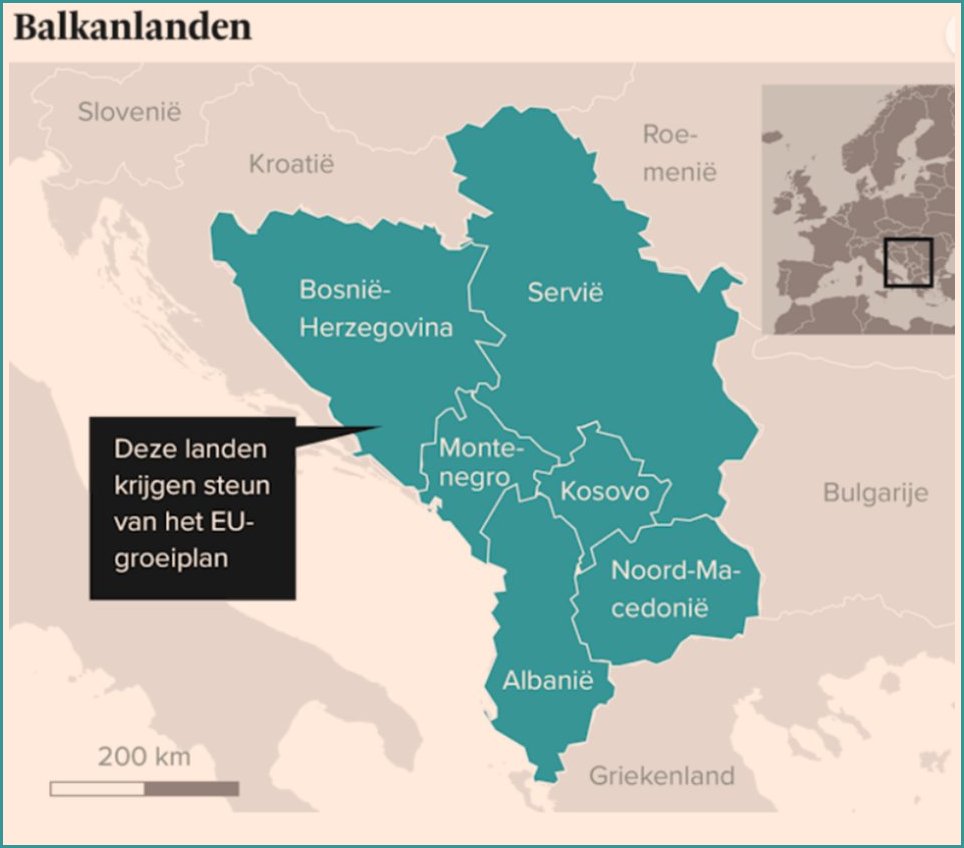
With the war in Ukraine, there is a growing realization in Brussels that the Balkan region has received little attention in recent years. A €6 billion growth plan has therefore been drawn up. Is this enough to keep embittered countries within the European sphere of influence?
Countries such as Ukraine and Moldova are now being offered(candidate) EU membership, but that is more like vacuous symbol politics. Turkey has been a candidate country since 1999! By the way, the two countries – like Romania – do not belong to the Balkan region. If you put your ear to the ground in Brussels, you will hear, among other things, that – after keeping the doors closed for years – there is once again plenty of talk about enlarging and strengthening the European Union.
Recently, Ukraine and Moldova were given the green light to begin accession talks. 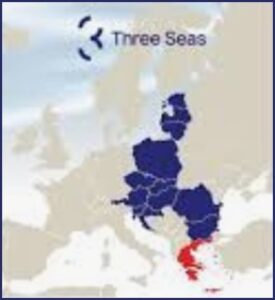 Brussels also provided a new amount of money to speed up the accession process of northern Macedonia, Bosnia and Herzegovina, Montenegro, Serbia, Kosovo and Albania. Except for Kosovo, these countries have already been candidate countries, in some cases for nearly two decades
Brussels also provided a new amount of money to speed up the accession process of northern Macedonia, Bosnia and Herzegovina, Montenegro, Serbia, Kosovo and Albania. Except for Kosovo, these countries have already been candidate countries, in some cases for nearly two decades
The countries lost hope for quick EU membership due to the difficult accession process. Administrative reforms came to a halt, economies stagnated and many ambitious young people left. Autocratic regimes such as Russia, China, Turkey and the Gulf states, meanwhile, sought to put their stamp on the region, while the EU considers it its backyard. With a €6bn growth plan, to be divided among six countries, Brussels is trying to improve ties and revive the European dream in the Balkans.
With the war in Ukraine and growing Chinese influence, the EU is realizing that it has neglected the Balkan region in recent years, says Berta López Domènech, analyst at research institute European Policy Centre. “Reforms failed to materialize, causing the region’s democratic decline,” she states. ‘Brussels realizes that the only path forward is to give the Balkan countries a realistic prospect of accession. A €6bn growth plan should improve ties between Brussels and the Western Balkans.
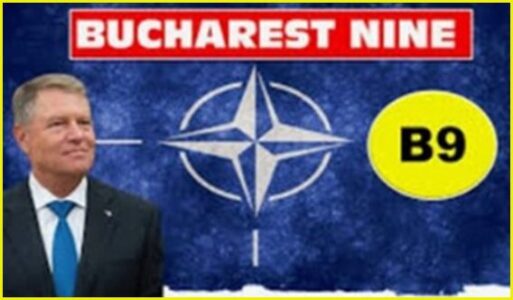 If one looks at the entire Southeastern Europe region, one can see that Romania is the only country with a politically stable environment. Not surprisingly, people pressured President Klaus Johannes to run for the post of NATO Secretary General, and he will not shed a tear that it didn’t work out. After all, on his initiative an alliance of NATO member states directly or indirectly bordering the Russian Federation was established, This cooperation is called B 9(Bucharest 9). During that period, Western NATO member states hardly took any initiative. Only now do people really realize that these countries are on the front lines!
If one looks at the entire Southeastern Europe region, one can see that Romania is the only country with a politically stable environment. Not surprisingly, people pressured President Klaus Johannes to run for the post of NATO Secretary General, and he will not shed a tear that it didn’t work out. After all, on his initiative an alliance of NATO member states directly or indirectly bordering the Russian Federation was established, This cooperation is called B 9(Bucharest 9). During that period, Western NATO member states hardly took any initiative. Only now do people really realize that these countries are on the front lines!
Having already discovered Romania’s stabilizing role, the US is now moving its European troops from Germany’s Ramstein to Romania.
However, the European Union can be blamed for still not seeing the EU member states that have already joined as equals, and once again it was Klaus Johannis who helped take the initiative to improve this situation by establishing the Three Seas Forum of 12 EU member states along or near the Baltic, Black and Adriatic Seas, with the aim of promoting mutual dialogue on various common issues of concern to the countries involved.
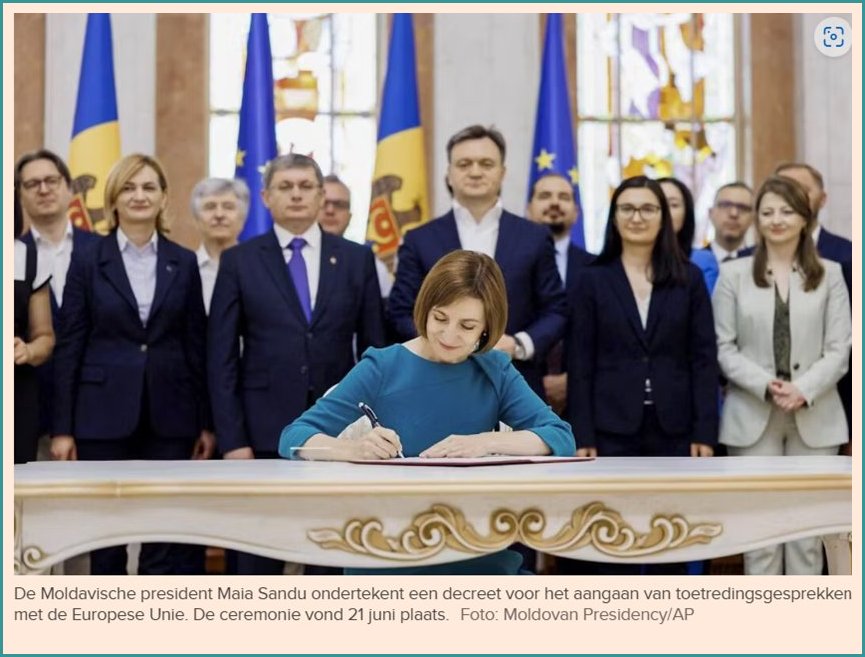
It is not surprising that some countries started looking around for support from elsewhere, says University of Amsterdam associate professor of East European studies Carlos Reijnen. In particular, Serbia is openly flirting with China and Russia. For example, Belgrade accepted loans from China and President Aleksandar Vučić maintains a good relationship with Russian President Vladimir Putin. That is worrisome, Reijnen said, since Serbia, as the largest country, is the most important to keep inboard. ‘Moreover, Serbia has a lot of influence in surrounding countries, especially in Bosnia.’
It would already be an improvement if people in Brussels (i.e., EU and NATO) gave less attention to job hunting, which does not enhance credibility or prioritization, and that includes the Western European member states.
Radical/Extreme Right shakes up European Parliament, but political middle remains intact
The European People’s Party (EPP), which includes the Dutch party CDA and soon probably BBB and NSC, has been the largest bloc in the European Parliament for years. In Brussels, the group traditionally works with the Social Democrats (S&D), the second largest European family.
Liberals themselves will also be pleased with the outstretched hand. The group took the biggest hit, losing some 20 seats. The Greens will also have woken up Monday with a hangover. They have lost heavily, and they too can lean on Weber’s words. The Greens pull together with the Social Democrats a lot in Parliament.
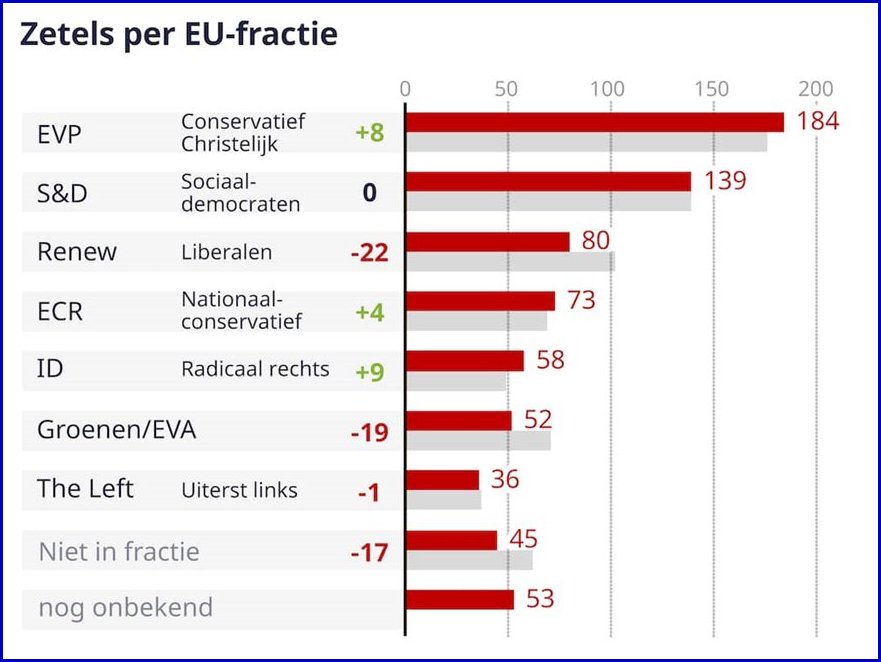
One thing was already clear: cooperation with the radical right-wing I&D family was out of the question. Only national conservatives were open to that.
I&D is a collection of radical-right and populist parties. Geert Wilders’ PVV joined in. And also, for example, Marine Le Pen’s French Rassemblement National. That party caused the biggest stir in Europe on Sunday night. One in three French people voted for it. That earns I&D a lot of seats.
At first glance, the pull to the right is not yet well reflected in the new composition of Parliament. But that could change: there are still many right-wing MEPs looking for a political family. They could still join either I&D or the national conservatives.
It may even just be that there will be another new, right-wing family.
NOTE At the time of composing this newsletter, the2nd round of the French elections has not yet taken place, which may cause modest shifts.
Special Messages

Good farming in Romania
It is a relatively unknown fact, but Dutch entrepreneurship in Romania is booming. More and more entrepreneurs run successful businesses here and enjoy working here. Consequently, the Netherlands has been the leading investor in Romania for 15 years in a row. That is quite extraordinary for a small country like the Netherlands. To further encourage and strengthen mutual trade relations, the Dutch Romanian Network (DNR) was established. In the DRN, Dutch and Belgian entrepreneurs from different sectors exchange experiences, news and tips about doing business in Romania.
Another important activity of the DRN is bringing together entrepreneurs in expert meetings. On April 25, DRN organized such a meeting in Venlo, on the agricultural sector. About 100 entrepreneurs, including arable farmers, dairy farmers and fruit growers, attended and were informed and inspired by some successful agriculturists in Romania. An impressive example is the story of Jan de Boer – how appropriate is his name. His company has been around for 20 years and is now publicly traded. In addition to several large dairy farms, Jan also runs a hotel and a training center in Romania.
One of the main catalysts of the DRN is honorary consul Ben Jager. He has a large network within various government and business entities. Under his leadership, the necessary lobbying work is also being done, with the recent (partial) accession of Romania to the Schengen area being a good example of a success.
In the Netherlands, as we know, farmers run into many restrictions. Regularly, agricultural entrepreneurs choose to settle abroad, for example in Canada or Denmark. However, Romania is still relatively unknown, which is unfortunate since the country offers plenty of opportunities for farmers. As much as 10 million hectares of farmland are available, for example. Moreover, there are opportunities for large international buyers; Friesland Campina, for example, has several branches in Romania. Not for nothing is the agricultural sector from the Netherlands and Belgium best represented in Romania, followed at some distance by the ICT and Automotive sectors.
Anyway, back to that expert meeting, where there were about 20 entrepreneurs and expats walking around doing business successfully in Romania. Personally, I found it extremely inspiring to get to know these fellow entrepreneurs. I can’t help it, my brain immediately starts looking for matches between those very different type of entrepreneurs at such a moment. What common “label” applies to them? What is the connecting factor? What moved them to build a life in Romania? What similarities are there when it comes to personal experiences you go through as an entrepreneur in Romania?
These questions provided interesting insights. So it turns out that doing business remotely does not work. All of the entrepreneurs present appeared to be living and working in Romania themselves and operationally involved in their businesses on a daily basis.

In addition, all of these people had mastered the Romanian language. These are two key success factors, which also apply (at least largely) to myself. Another thing that struck me was the amazing improvement in Romanian laws and regulations and the reduction in bureaucracy. When I took my first baby steps in building a business in Romania in 1996, I felt like a real pioneer. Anno now, setting up a business is a piece of cake, with a Romanian version of the Chamber of Commerce (the CCIR) and regulations with European harmonization and local governments welcoming foreign investors with open arms. Last but not least, the extraordinarily high work ethic and commitment of Romanian employees is something I received confirmation from literally everyone I spoke to at the expert meeting. Perhaps that is also immediately the biggest unifying factor.
Curious about the next expert meeting? Keep an eye on the DNR website or sign up for the newsletter at www.dutchromaniannetwork.nl
Introduction to new Honorary Consul in Romania
By chance, we discovered that a new star has appeared in the Romanian firmament and her name is Amalia Georgescu. Living in Iași a beautiful city that was the capital of the former principality of Moldova.
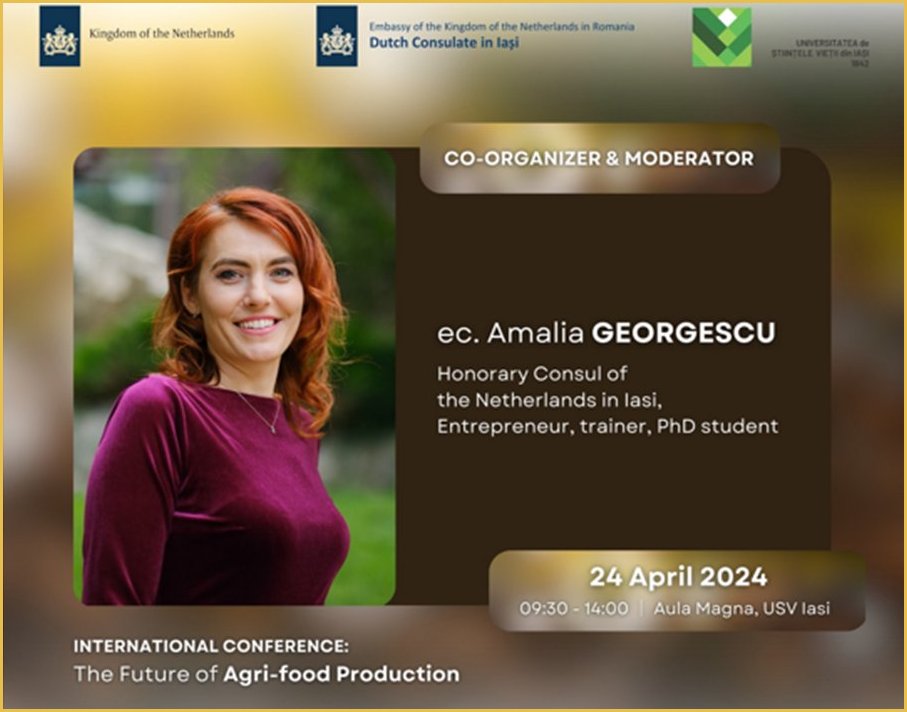
According to our data, she is associated with company Biocomp that moves in the field of UC-C light technology and affiliated with OFA UGIR Iasi, an organization of women entrepreneurs and also has the necessary experience and knowledge of marketing. Which seems challenging to us when you are appointed honorary consul who, after all, also has a role in promoting bilateral trade relations between Romania and the Netherlands. In short, as Dutch colleagues, we wish her success. We are aware that it has since undertaken activities in this area.
Her contact information is: Bd.Chimiei 12, Iasi. Tel.+40 758 794 795 and email: iasi.dutchconsulate@gmail.com
Below we provide another complete picture of all honorary consuls representing our country in Romania.
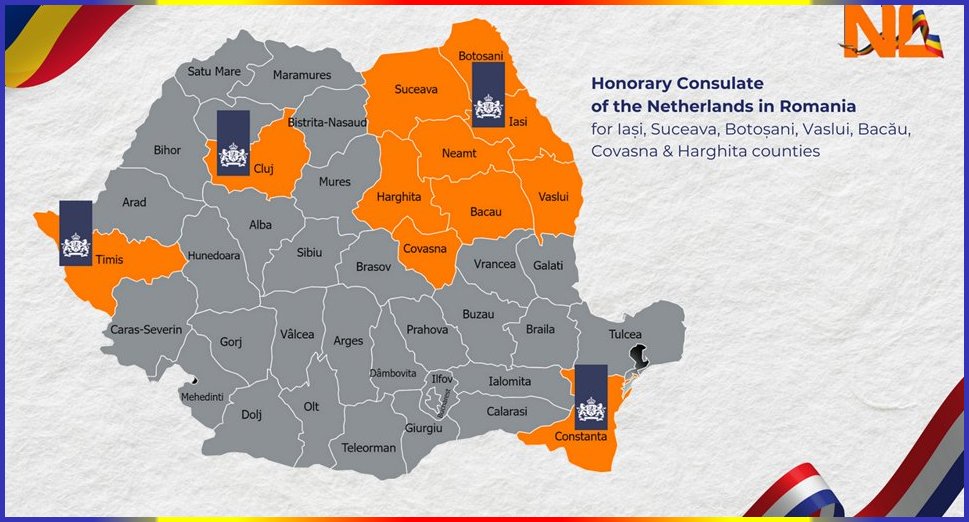
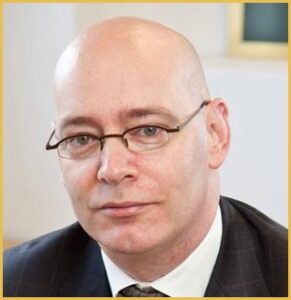 Wouter Reijers – Cluj Napoca |
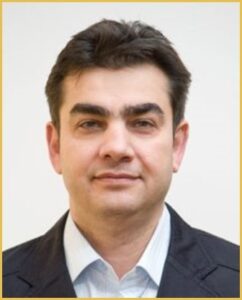 Dan Coman – Constanta |
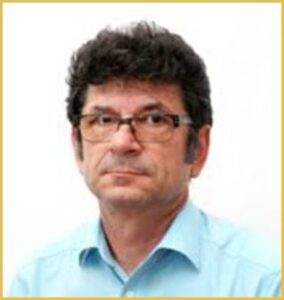 Marius Popa – Timisoara |
Opening of Casa Romaneasca in Sint-Oedenrode
Sint-Oedenrode – Francisco Ojeda Garcia, an experienced chef with an impressive background in international hotels in Switzerland, Germany and most recently at the Ramada Hotel in Romania, is opening a new restaurant in Sint-Oedenrode: Casa Romaneasca, Kofferen 20. Ojeda, who became known in Romania as an expert on Romanian cuisine, came to the Netherlands for consulting work and was pleasantly surprised by the country’s culinary diversity.
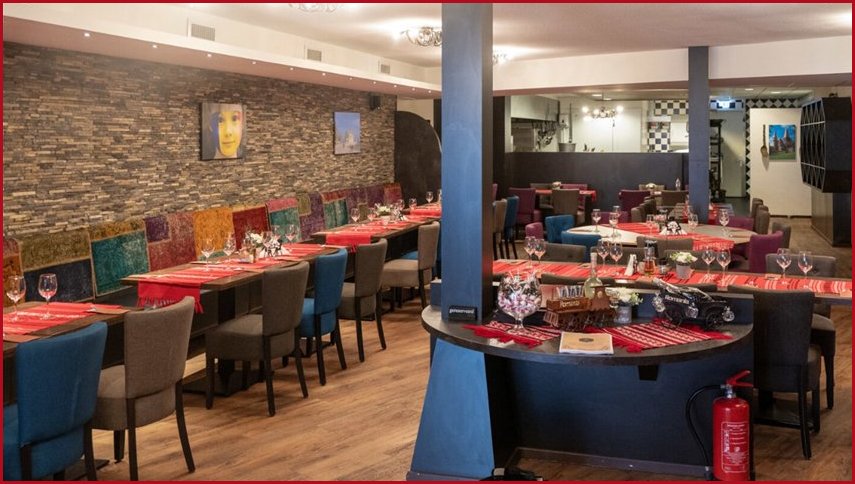
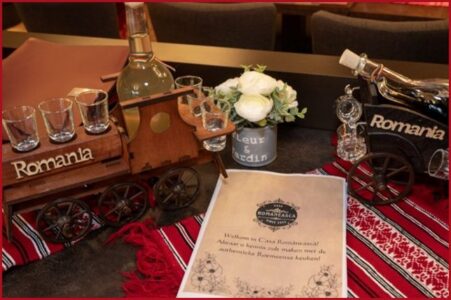 Ojeda noted, however, that Romanian cuisine is hardly represented in the Netherlands. Inspired by its rich culinary history and unique combination of Romanian and Roman influences, he decided to bring this flavorful cuisine to Sint-Oedenrode. With the support of Klaassen hospitality brokerage, he found a perfect location for his new adventure.
Ojeda noted, however, that Romanian cuisine is hardly represented in the Netherlands. Inspired by its rich culinary history and unique combination of Romanian and Roman influences, he decided to bring this flavorful cuisine to Sint-Oedenrode. With the support of Klaassen hospitality brokerage, he found a perfect location for his new adventure.
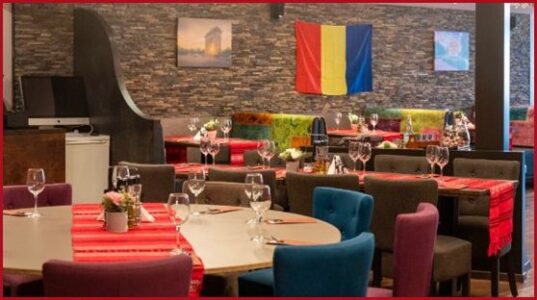 Casa Romaneasca promises a unique culinary experience, combining the authentic flavors of Romania with modern, Mediterranean influences.
Casa Romaneasca promises a unique culinary experience, combining the authentic flavors of Romania with modern, Mediterranean influences.
Opening hours: Monday-Thursday 4 p.m. to 10 p.m., Tuesday closed, Friday-Sunday 4 p.m. to 11 p.m.
email: contact@casaromaneasca.nl tel: 06-25349109
How a Dutch city became a technological superpower.
At the city’s university, Romanians are the most numerous.With an industry on the site in the 1990s, a small Dutch city is now a technological powerhouse. Eindhoven produces semiconductor chips used in everything from home appliances to rockets.
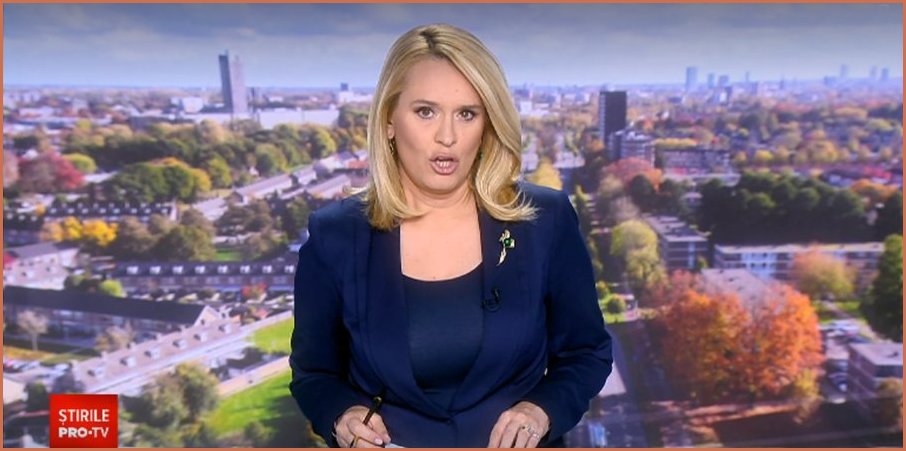
But it is also where most of the world’s patents for inventions are filed. How was it possible, find out in a new episode of the Știrilor PRO TV campaign “Eu yes la vot.”
In Eindhoven, universities, companies and the government have formed a strategic partnership that supports innovation.
Universities provide knowledge, companies bring resources, and the government provides favorable policies as well as the infrastructure for a quality life. Thus, they attracted engineers from around the world and students from 100 countries. The Romanians are in first place.
Eindhoven is one of the settlements with the most intelligent people in the world. It is home to Europe’s largest technology company, which makes semiconductor chips used in everything from smartphones to rockets. Alina, Eindhoven City Hall employee, explains.
Alina Totti, Eindhoven City Hall employee: “It’s an area where a lot of young people come, a lot of engineers, we’re in an area that focuses on high-tech. It’s the epicenter of the semiconductor industry. That means chips and the machines that produce the chips and then we attract a lot of people from outside the Netherlands who come to work.”
In the early 1990s, Eindhoven fell into decline after several factories had to close due to cheap competition from Asia.
The city has reinvented itself through a strategic partnership between local government, universities and businesses. Together they make development decisions. Thus was born Brainport, an innovation campus where 20,000 researchers, students and startups collaborate on the future.
The world’s first off-road solar car was designed by students at Eindhoven University of Technology.
On the road, the car, in which you can also live, has an autonomy of over 700 kilometers on a sunny day.
At the University of Eindhoven, students from over 100 countries are studying. The Romanians are in first place. Delia is the University’s representative in Brussels because this is where they want to have a say in European semiconductor policy.
Delia Mitcan, TU/E university representative in Brussels: “Now we are in front of the Innovation Space. Students from the 9 faculties come together to solve a problem that has been given to them by a company, for example, or by Look, can you come to a conclusion or solution to our problem? University professors work in companies and people who work in companies are there one day a week, for example, to teach the students.”
Companies and professors in this Sillicon Valley of Europe file nearly 500 patents for inventions each year for every 100,000 residents.
It is one of the highest rates in the world. However, the city’s rapid development was accompanied by a housing crisis. Finding a rental apartment can take up to six months.
Three years ago there was nothing in this area except that monumental building in front of the city. Hundreds of houses were built with amazing speed, and for the first time the city rose vertically.
The deputy mayor personally sees to it that the city does not turn into a real estate chaos. Despite the acute need for housing, obtaining a building permit can take up to five years. Maes Van Lanschot, deputy mayor of Eindhoven: “About 100,000 homes need to be added throughout the region. And we are looking for places where there is connection, because we also want to solve the mobility problem. Sitting closer to public transport, it is easier to expand the number of homes “.
An entire abandoned industrial area has been transformed into residential buildings and headquarters for startups. At 133 meters tall, Eindhoven will have the tallest wooden building in the world.
In order for large companies to stay in Eindhoven, the Dutch government announced an investment of 2.5 billion euros in the development of the region, focused on infrastructure.
But every government decision is made with the residents, because if they feel at home, they don’t want to go anywhere else.
The Dutch government also said it plans to invest 54 million euros in the production of drones for the armed forces and 25 million euros in a fund to help defense industry start-ups develop.
How a Romanian outsider experiences Eindhoven and was broadcast on a popular Romanian TV channel
Cuts to embassies are out of the question
Below is a contribution from Simone Filippini that we as Dutch Romanian Network would like to support.
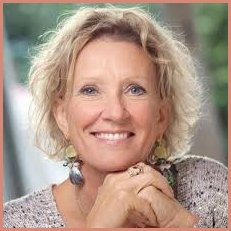 If the cabinet wants to preserve and further strengthen that “wonderful Netherlands,” the stupidest thing it can do is cut back on embassies, on relations, on international cooperation. That has happened before and failed, because we are now an open trading country and completely dependent on what happens in the rest of the world. Our feelers must be out everywhere. Our contacts everywhere are flourishing.
If the cabinet wants to preserve and further strengthen that “wonderful Netherlands,” the stupidest thing it can do is cut back on embassies, on relations, on international cooperation. That has happened before and failed, because we are now an open trading country and completely dependent on what happens in the rest of the world. Our feelers must be out everywhere. Our contacts everywhere are flourishing.
If things go badly elsewhere, we feel it too. In today’s world, there is nothing else for a country like the Netherlands to do: we must invest fully in international cooperation right now and help invent new smart and effective solutions to European and world problems.
Only if we as a country contribute proportionally in all areas, including financially, can we develop influence and goodwill necessary to get others to grant us something that is extra important to our country.
| Simone worked as a diplomat for the State Department for 25 years. Among others, she was responsible for communication on European cooperation and Head of the women’s rights department. She also served as Ambassador for the Netherlands in Northern Macedonia and Consul General in Miami. In 2013, Simone left the government to become Director of the aid organization Cordaid. She then worked for a year as interim Director at the Netherlands Institute for Multiparty Democracy. She then followed her passion and founded her own organization Leadership4SDGs (L4SDGs), aimed at strengthening the quality of leadership in governments with a view to achieving the Sustainable Development Goals – the SDGs – of the United Nations (UN). |
Disclaimer

The newsletter of the Dutch Romanian Network is compiled with great care. The Dutch Romanian Network cannot accept any liability for a possible inaccuracy and/or incompleteness of the information provided herein, nor can any rights be derived from the content of the newsletter. The articles do not necessarily reflect the opinion of the board.
